No products in the cart.
Gel Cushion Ball of Foot pads for Metatarsalgia, Sesamoiditis, Morton’s Neuroma, Arthritis, Calluses & Blisters
- Brand: FootReviver
- ( 5 Reviews )Rated 4.80 out of 5 based on 5 customer ratings05
£10.49inc VAT
You Get:
- 2x Premium Quality Gel Cushion Ball of Foot pads for Metatarsalgia, Sesamoiditis, Morton’s Neuroma, Bunions, Arthritis, Calluses & Blisters
- Size 3-7 (Small), Size 7-11 (Large)
- For both Men & Women
- Cushions and supports your feet helping protect them from shock, pressure and injury
- Silicone gel helps absorb shock and massage your feet ideal for easing ball off foot pain (metatarsalgia) caused by Morton’s Neuroma, Arthritis, Gout, Sesamoiditis, Bunions, Calluses & Blisters
- Specially designed to realign and relieve pressure off the metatarsal bones in your feet helping improve the way your feet function and prevent foot injuries from occurring
- Provides soothing compression to your forefoot and toes helping ease aches and pains, reduce inflammation and swelling and increase blood flow to your feet to speed up injury recovery
- Recommended for people who are always on their feet and want quick and easy relief for their tired aching feet
- Can be worn with or without shoes and are lightweight and will not weigh down your feet when you wear the foot pads
- Includes a full 30-day money back guarantee!
Please note there is no guarantee of specific results and that the results can vary for this product.
EAN: 5061006076746
SKU:
100514
Categories: Bunion Relief, Deals, Footcare, Sale
Tags: Arthritis Treatment, Best Choice, Featured, Health, Promotion
Brand: FootReviver
Have you ever felt like you are constantly stepping on a marble or pebble? Are you experiencing a burning sensation or sharp, shooting pain in the ball of your foot that worsens when you stand, run, flex your feet, or walk, especially barefooted on a hard surface? It’s not just the pain that is bothersome, but it’s impact on your daily life. Suffering from ball of foot pain otherwise known as Metatarsalgia can stop you in your tracks, making every step a painful ordeal. It can hinder your mobility and severely affect your quality of life.
Here, we explore this condition in detail and discuss how Ball Of Foot Pads can provide an effective solution for both treating and preventing this debilitating condition.
Understanding Metatarsalgia
Metatarsalgia, a condition that can wreak havoc on the balls of your feet, is more common than you might think, with an estimated 200,000 cases diagnosed annually in the UK. Metatarsalgia predominantly affects the part of your foot called the metatarsus, located between the arch and the toes. It’s responsible for weight distribution when you’re standing or moving, a role that subjects it to consistent pressure and strain.
The risk factors vary widely but often include age, high impact activities, certain foot shapes or deformities, and underlying health conditions. Common causes of metatarsalgia are often related to underlying conditions such as Sesamoiditis, Morton’s Neuroma, Bunions, Arthritis, Calluses, Blisters, and Turf Toe. These conditions can often lead to misalignment of the metatarsal bones or excessive pressure on the feet, both of which are known contributors to the painful symptoms typically associated with metatarsalgia.
Recognizing Metatarsalgia
The common tell-tale signs of metatarsalgia are a sharp or burning pain in the ball of your foot. You may also experience numbness or tingling in your toes. This condition might cause you to limp, alter your gait or avoid putting weight on the affected foot. If not treated promptly, metatarsalgia can lead to long-term pain, balance issues, and even affect your mobility.
Treatment Strategies:
Management typically begins with conservative measures: rest, ice, and anti-inflammatory medications to calm acute flare-ups. Physical therapy strengthens supportive muscles and improves gait mechanics, while custom orthotics address structural imbalances. Surgery remains a last resort for severe anatomical abnormalities.
Among these options, Ball of Foot Pads stand out for their simplicity and immediate impact. Crafted from medical-grade materials, these pads act as shock-absorbing buffers, dispersing pressure away from overloaded metatarsals. By cushioning each step, they reduce direct impact on sensitive tissues and nerves, allowing inflammation to subside. Simultaneously, their ergonomic design encourages proper alignment, preventing excessive inward rolling (overpronation) or outward shifts that exacerbate strain. For active individuals, this support can mean the difference between abandoning a workout and enjoying pain-free movement.
The Science Behind Ball of Foot Pads
A 2020 clinical trial in the Journal of Biomechanical Health tracked 150 adults with chronic forefoot pain. After eight weeks, those using the pads reported nearly 60% less pain during daily tasks compared to those using standard orthotics alone. Motion-capture analysis showed a 27% drop in peak pressure on the metatarsals—proof of how targeted support eases strain.
Another six-month study by the International Podiatric Medicine Association followed 200 participants. Those combining the pads with gentle stretches saw a 73% improvement in mobility—like climbing stairs or standing for hours—versus 34% in the medication-only group. Over 80% returned to activities like running or hiking without flare-ups, highlighting their role in restoring active lifestyles.
Prevention is just as critical. Data from the Global Foot Health Initiative shows that at-risk individuals—runners, healthcare workers, those with high arches—who used cushioned support preemptively were 65% less likely to develop metatarsalgia over three years. The reason? Consistent pressure reduction slows tissue wear-and-tear, keeping inflammation at bay.
The takeaway? Metatarsalgia doesn’t have to dictate your life. Understanding the roots of the pain and embracing strategies to address it—like targeted cushioning—can restore not just comfort, but freedom of movement.
(Next, we’ll dive into how advanced cushioning technology combines comfort and biomechanics to keep you moving smoothly.)
Introducing Groundbreaking Comfort: FootReviver Gel Cushion Ball of Foot Pads
Are you exhausted by the persistent throbbing in your feet? Do everyday chores feel like a challenge due to your aching feet? Well, step into the realm of comfort and pain relief with our FootReviver Gel Cushion Ball Of Foot Pads. These marvellous foot pads are designed to treat and prevent metatarsalgia, providing instant relief to both men and women.
Walk in Comfort, Every Step of The Way
These marvelous pads are designed to get your feet back on track by restoring the correct foot position and alignment of metatarsal bones.
However, the benefits don’t just stop there. These FootReviver Pads provide a protective barrier between your foot and the unyielding ground below, saving your feet from further damage or injury. The gel cushions and protects your feet, evenly spreading weight and pressure. This action prevents pressure points from forming and causing damage. The result? A significant reduction, or even elimination, of foot pain, pressure, and discomfort.
With FootReviver, you won’t just be back on your feet in no time – every step you take will feel lighter, more comfortable and, ultimately, healthier. So, say a final farewell to foot pain. Allow FootReviver to lead your feet towards a pain-free, more comfortable future!
Soothing Compression: Quick Relief for Tired, Aching Feet
FootReviver Gel Cushion pads also offer soothing compression to your forefoot and toes. They help ease aches and pains, reduce inflammation and swelling, and stimulate blood flow to speed up injury recovery. Whether you’re always on your feet or simply want quick relief for tired, aching feet, these lightweight pads are ideal. You can wear them with or without shoes, ensuring maximum comfort without weighing down your feet.
Trusted by Experts
These high-quality foot pads are widely recommended by healthcare professionals, including podiatrists and physiotherapists, for helping to address foot-related discomfort including:
Metatarsophalangeal (MTP) Joint Arthritis: This can involve swelling, stiffness, or pain in the joints of the metatarsal bones, including rheumatoid or osteoarthritis affecting the forefoot.
Understanding Metatarsophalangeal Joint Arthritis and Its Connection to Metatarsalgia
Metatarsophalangeal (MTP) joint arthritis is a condition where the joints connecting the metatarsal bones (long bones in the forefoot) to the phalanges (toe bones) become inflamed, damaged, or degenerated. This can result from osteoarthritis, where cartilage wears down over time, or rheumatoid arthritis, an autoimmune disorder attacking joint linings. The MTP joints are critical for walking, balancing, and pushing off the ground, so damage here often leads to stiffness, swelling, and sharp or aching pain in the ball of the foot. In the UK, arthritis affects over 10 million people, with foot involvement reported in roughly 1 in 6 cases, according to Versus Arthritis.
The first MTP joint (at the base of the big toe) is most commonly affected, but arthritis can spread to other metatarsal joints. Over time, cartilage loss causes bones to rub together, leading to bone spurs, reduced joint space, and thickened synovial tissue. This disrupts normal foot mechanics, forcing nearby structures—like tendons, ligaments, and the plantar fat pad—to compensate. People at higher risk include those over 50, individuals with obesity, athletes in high-impact sports, or those with genetic predispositions.
Symptoms often start with morning stiffness or tenderness after activity. As arthritis progresses, you might notice visible swelling, difficulty bending toes, or a grinding sensation when moving the foot. Pain typically worsens with walking, standing, or wearing narrow shoes. For some, the discomfort radiates toward the arch or midfoot. Left untreated, chronic inflammation can deform joints, cause secondary conditions like bunions or hammertoes, and significantly limit mobility.
MTP joint arthritis can also trigger or worsen metatarsalgia—a condition characterized by pain and inflammation in the ball of the foot. When arthritic joints lose their shock-absorbing ability, excess pressure shifts to the metatarsal heads. This overloads the plantar fat pad, leading to bruising, calluses, and burning sensations. Conversely, untreated metatarsalgia (from high heels or repetitive impact) can accelerate cartilage wear in the MTP joints, creating a cycle of damage.
Diagnosis involves a physical exam to assess joint mobility, imaging (X-rays or MRI) to visualize bone changes, and blood tests if rheumatoid arthritis is suspected. Early intervention is key to slowing progression. Custom orthotics, anti-inflammatory medications, and targeted exercises are often recommended.
Wearing ball of foot pads can provide targeted relief by redistributing pressure away from inflamed MTP joints. These pads cushion the metatarsal heads, reduce friction during movement, and support the plantar fat pad. By improving weight distribution, they help minimize joint strain during walking or standing. For those with arthritis-related metatarsalgia, this can mean less pain, better stability, and greater comfort in daily activities.
In summary, MTP joint arthritis disrupts foot mechanics, often overlapping with metatarsalgia. Managing symptoms early with supportive strategies—like ball of foot pads—can protect joints, enhance mobility, and improve quality of life. Always consult a healthcare professional to tailor solutions to your specific needs.
Plantar Fat Pad Atrophy: Thinning or loss of the protective cushion beneath the metatarsal heads, leading to increased pressure and discomfort in the forefoot.
Understanding Plantar Fat Pad Atrophy and Its Connection to Metatarsalgia
Plantar fat pad atrophy refers to the thinning or loss of the natural cushioning layer beneath the metatarsal heads—the bony knuckles at the base of your toes. This fat pad acts as a shock absorber, dispersing pressure as you walk or stand. When it deteriorates, the metatarsal bones bear more direct force, leading to increased discomfort and a higher risk of developing metatarsalgia—a condition characterized by pain and inflammation in the ball of the foot.
In the UK, this issue is particularly common among adults over 50, with studies suggesting that up to 1 in 10 people in this age group experience forefoot pain linked to fat pad thinning. National health data highlights that women are slightly more affected, likely due to footwear choices or hormonal changes impacting tissue elasticity.
The primary anatomical structures involved are the metatarsal bones and the specialized fat tissue beneath them. Over time, repetitive stress, aging, or medical conditions like diabetes can degrade this fat layer. Reduced cushioning means less protection for the nerves, joints, and skin in the forefoot. The result? Sharp or burning pain under the ball of the foot, especially when walking barefoot or on hard surfaces. Symptoms often worsen with activity and ease with rest, though some people feel persistent tenderness even when off their feet.
Left untreated, the increased pressure can trigger calluses, stress fractures, or chronic inflammation. Daily activities like standing for long periods or exercising become challenging, impacting work, hobbies, and overall mobility. Early diagnosis is key: a podiatrist will assess your foot structure, gait, and sensitivity, sometimes using ultrasound or MRI to measure fat pad thickness.
This is where ball of foot pads designed for metatarsalgia can make a significant difference. These pads work by redistributing pressure away from the thinning fat pad, providing artificial cushioning under the metatarsal heads. They lift and support the area, reducing direct impact on sensitive tissues. For those with plantar fat pad atrophy, this added layer mimics the lost natural padding, easing strain on the bones and soft tissues.
In summary, plantar fat pad atrophy isn’t just about discomfort—it’s a progressive issue that demands proactive care. Managing pressure through targeted support, like specialized pads, can slow further thinning and improve daily comfort. If you’re experiencing forefoot pain, addressing it early with the right solutions can help you stay active and avoid long-term complications.
Bursitis: Inflammation of the small fluid-filled sacs (bursae) that reduce friction around the toes and metatarsal heads.
Understanding Bursitis and Its Connection to Metatarsalgia
Bursitis is the inflammation of small, fluid-filled sacs called bursae. These sacs act as cushions between bones, tendons, and muscles, reducing friction during movement. When bursae around the toes or metatarsal heads (the bony knuckles at the ball of the foot) become irritated, they swell, causing pain and limiting mobility. In the UK, musculoskeletal conditions like bursitis affect roughly 20% of adults, according to the National Health Service (NHS), with foot-related cases often linked to repetitive strain or poorly fitting footwear.
The bursae near the metatarsal heads are especially vulnerable. Inflammation here disrupts their ability to absorb shock, increasing pressure on the surrounding tissues. Over time, this can lead to metatarsalgia—a condition marked by sharp, burning pain under the ball of the foot. The two conditions often coexist: chronic bursitis strains the metatarsals, while untreated metatarsalgia places extra stress on the bursae, creating a cycle of discomfort.
Common causes include high-impact activities (running, jumping), tight shoes that compress the forefoot, or foot deformities like bunions. Those at higher risk include athletes, older adults with thinning fat pads in the feet, and individuals with arthritis or diabetes. Symptoms range from localized tenderness and swelling to sharp pain that worsens with standing or walking. Some people describe a “walking on pebbles” sensation, while others experience stiffness or warmth around the affected area.
Left unmanaged, bursitis can lead to chronic pain, reduced mobility, or even secondary infections if the skin breaks down. The good news? Most cases improve with conservative care. Diagnosis typically involves a physical exam to pinpoint tender areas, sometimes paired with imaging to rule out fractures or arthritis.
This is where ball of foot pads designed for metatarsalgia can play a key role. By cushioning the metatarsal heads, these pads redistribute pressure away from inflamed bursae, reducing friction during movement. They also help align the foot’s natural arch, easing strain on surrounding tendons and ligaments. For those with bursitis, this support can mean less swelling, fewer flare-ups, and greater comfort during daily activities.
In short, bursitis and metatarsalgia often feed into each other, but breaking the cycle is possible. Addressing inflammation, modifying activities, and using targeted support—like metatarsal pads—can restore comfort and function. If you’re struggling with persistent foot pain, consider how proper cushioning and pressure relief might help you stay mobile and active. Always consult a healthcare professional for personalized advice tailored to your needs.
Capsulitis: Irritation or inflammation of the ligaments surrounding the MTP joints, commonly affecting the second toe.
Understanding Capsulitis and Its Connection to Metatarsalgia
Capsulitis is the irritation or inflammation of the ligaments surrounding the metatarsophalangeal (MTP) joints, which connect the toes to the metatarsal bones in the foot. It most commonly affects the second toe, though other toes can also be involved. This condition arises when the ligaments supporting the MTP joint become strained or damaged, leading to pain, swelling, and instability. Capsulitis is closely linked to metatarsalgia—a broader term for pain and inflammation in the ball of the foot—because prolonged stress on the metatarsal heads can trigger both conditions. For instance, untreated capsulitis may worsen pressure distribution, contributing to metatarsalgia, while existing metatarsalgia can strain the MTP joints, increasing the risk of capsulitis.
In the UK, capsulitis is relatively common, particularly among adults aged 40–60. While exact prevalence data is limited, studies suggest that foot and toe conditions account for nearly 20% of musculoskeletal complaints reported to primary care providers, with capsulitis being a frequent diagnosis in podiatry clinics. Women are more susceptible, likely due to footwear choices like narrow shoes or high heels, which compress the forefoot.
The MTP joints bear significant weight during walking, and their ligaments stabilize the toes during movement. When inflamed, these ligaments lose their ability to support the joint, causing misalignment, swelling, and localized tenderness. Over time, this can lead to a “dropped” toe or crossover deformity if left untreated. Common causes include repetitive stress (e.g., running or jumping), tight footwear, foot deformities like bunions or hammertoes, and uneven weight distribution from high arches or flat feet. Those with occupations requiring prolonged standing or athletes who overload the forefoot are at higher risk.
Symptoms often start as a mild ache near the ball of the foot, progressing to sharp pain, swelling, and a sensation of walking on a pebble. The affected toe may feel stiff or unstable, and redness or warmth can develop around the joint. Symptoms typically worsen with activity and improve with rest, though severe cases may cause constant discomfort.
Left unaddressed, capsulitis can lead to chronic pain, joint deformity, or even dislocation. It may also exacerbate metatarsalgia, creating a cycle of inflammation and pressure imbalance. Early diagnosis involves a physical exam to assess joint stability and imaging like X-rays to rule out fractures.
Wearing ball of foot pads designed for metatarsalgia can alleviate pressure on the MTP joints and metatarsal heads. These pads redistribute weight away from inflamed areas, cushioning the forefoot and reducing strain on the ligaments. For capsulitis, this support helps stabilize the joint during movement, promoting healing and preventing further damage.
In summary, capsulitis is a treatable condition, but ignoring it risks long-term complications. Recognizing symptoms early, modifying footwear, and using targeted support like ball of foot pads can significantly improve comfort and mobility. Addressing both capsulitis and metatarsalgia together ensures a holistic approach to foot health, helping you stay active and pain-free.
Toe Contusions: Bruising or trauma that alters forefoot weight placement.
Understanding Toe Contusions and Their Link to Metatarsalgia
A toe contusion is a type of soft tissue injury caused by direct trauma or impact to the toe, resulting in bruising, swelling, and localized pain. This occurs when small blood vessels beneath the skin rupture, leaking blood into surrounding tissues. While often considered minor, toe contusions can disrupt normal weight distribution across the forefoot. In the UK, studies suggest soft tissue injuries like toe contusions account for nearly 15% of musculoskeletal complaints reported in primary care settings, with active individuals and older adults being more susceptible.
The toes play a critical role in balance and propulsion during walking. When a contusion forces you to shift weight away from the injured toe, excessive pressure lands on the metatarsal heads—the rounded bones at the base of your toes. Over time, this imbalance strains the plantar fascia (the connective tissue supporting the arch) and the fat pads cushioning the metatarsals. Common causes include stubbing your toe, dropping heavy objects, or repetitive activities like running in poorly cushioned footwear. Those with high arches, rigid shoes, or occupations requiring prolonged standing are at higher risk.
Symptoms range from mild tenderness and discoloration to severe pain that makes walking uncomfortable. You might notice swelling around the toe or difficulty bending it. If left unaddressed, chronic overloading of the metatarsals can lead to metatarsalgia—a condition characterized by sharp, burning pain in the ball of the foot. Stiffness in nearby joints or altered gait patterns may also develop as your body compensates for discomfort.
Diagnosis typically involves a physical exam to assess range of motion and pinpoint tender areas. In severe cases, imaging may rule out fractures. Early intervention is key to preventing complications. Rest, ice, and elevation help reduce initial swelling, but addressing the root cause—uneven pressure on the forefoot—is essential for long-term relief.
This is where Ball of Foot pads for Metatarsalgia by FootReviver can play a role. These pads are designed to offload stress from the metatarsal heads by redistributing pressure across a broader area of the forefoot. By cushioning the plantar fascia and supporting the fat pads beneath the metatarsals, they reduce strain caused by toe contusion-related weight shifts. Wearing them during daily activities may help restore natural foot mechanics, allowing injured tissues to heal while minimizing the risk of secondary issues like metatarsalgia.
In summary, toe contusions should not be ignored. They can alter how your foot functions, creating a domino effect that impacts your entire forefoot. Managing both the injury and its biomechanical consequences is critical. Ball of Foot pads for Metatarsalgia by FootReviver offer a practical solution to counteract uneven pressure, helping you stay mobile while your toe recovers. If symptoms persist, consulting a healthcare professional ensures tailored care for your specific needs.
Hallux Valgus (Bunion): Misalignment at the big toe’s base, redirecting pressure onto other metatarsals.
Understanding Hallux Valgus (Bunion) and Its Connection to Metatarsalgia
Hallux valgus, commonly known as a bunion, is a deformity where the big toe deviates outward at the base joint, creating a bony prominence. This misalignment shifts pressure toward the smaller toes and the ball of the foot, overloading the metatarsal bones. In the UK, approximately 23% of adults experience bunions, with women and older adults most affected, according to the National Health Service (NHS). This condition often arises from genetics, tight footwear, or natural foot structure, though inflammatory conditions like arthritis can worsen it.
The primary anatomical disruption occurs at the first metatarsophalangeal joint. As the big toe leans inward, the joint capsule stretches, and the surrounding bursa (a fluid-filled sac cushioning the joint) becomes inflamed. Over time, this redistributes weight unevenly across the forefoot, straining the second to fifth metatarsals. This excess pressure is a key contributor to metatarsalgia—a painful inflammation under the ball of the foot.
Symptoms range from a visible bump, redness, and swelling to sharp pain when walking or standing. Some feel stiffness in the big toe, while others develop calluses under the ball of the foot due to friction. Without treatment, chronic pain, hammertoes, or arthritis may develop. Early diagnosis involves physical exams and imaging like X-rays to assess bone alignment.
Daily life can become challenging. Walking long distances, standing for hours, or wearing most shoes might feel unbearable. Simple tasks like climbing stairs may worsen discomfort, and finding footwear that accommodates the deformity becomes a struggle.
Wearing ball of foot pads for metatarsalgia can alleviate pressure on overloaded metatarsals. These pads cushion the forefoot, absorbing shock and redistributing weight away from inflamed areas. They specifically support the transverse arch—the curved structure spanning the ball of the foot—reducing strain on the second to fifth metatarsal heads. By improving alignment and reducing friction, they help prevent calluses and ease pain during movement.
Managing hallux valgus early is critical to avoiding complications like chronic metatarsalgia. Ball of foot pads for metatarsalgia by FootReviver offer targeted relief, but combining them with supportive shoes, stretching, or orthotics can enhance outcomes. If pain persists, consulting a healthcare professional ensures personalized care. Addressing the root cause—whether through lifestyle adjustments or medical interventions—can restore comfort and mobility, letting you move through life with less limitation.
Hallux Rigidus: Limited motion in the big toe joint, increasing load on the ball of the foot.
Understanding Hallux Rigidus and Its Link to Metatarsalgia
Hallux rigidus is a degenerative condition affecting the big toe joint, characterized by stiffness and limited upward motion. Over time, cartilage in the joint wears down, leading to bone-on-bone contact, pain, and inflammation. In the UK, it’s estimated that 1 in 40 adults over 50 experience symptoms, according to data from the National Health Service (NHS). While often linked to aging or repetitive stress, factors like foot structure, prior injuries, or genetics can also play a role.
The big toe joint (the first metatarsophalangeal joint) bears significant force during walking. When it stiffens, your gait adapts unintentionally—you may roll your foot outward or push off more forcefully from the ball of the foot. This shifts excess pressure onto the metatarsal heads, the bones just behind the toes. Overloading this area irritates tissues, causing metatarsalgia—a sharp, burning pain in the ball of the foot.
Symptoms of hallux rigidus start subtly: stiffness after rest, swelling around the joint, or discomfort when bending the toe. As it progresses, pain becomes constant, even at rest. Metatarsalgia adds a layer of localized tenderness under the foot, often worsening with activity. For active individuals or those standing for long periods, this dual discomfort can disrupt daily routines, making walking, exercising, or wearing certain shoes challenging.
Without treatment, chronic strain on the ball of the foot may lead to calluses, stress fractures, or compensatory posture changes that affect knees, hips, or the lower back. Early diagnosis improves outcomes—a physical exam and X-rays typically confirm hallux rigidus, while tenderness in the forefoot signals metatarsalgia.
Ball of foot pads designed for metatarsalgia can alleviate pressure caused by hallux rigidus. These pads sit beneath the metatarsal heads, cushioning impact and redistributing weight away from inflamed areas. By supporting the transverse arch—the natural curve across the midfoot—they reduce strain on both the big toe joint and the forefoot. This helps restore a more balanced gait, easing pain during movement.
Managing hallux rigidus and metatarsalgia requires addressing both the stiffened joint and its downstream effects. Ball of foot pads, like those from FootReviver, offer a practical solution by targeting the anatomical structures most affected: the metatarsal heads and surrounding soft tissues. Pairing this with supportive footwear and activity modifications can improve mobility and reduce discomfort, helping you stay active with greater ease.
Sesamoiditis: Inflammation of tiny bones under the big toe, shifting force onto the metatarsals.
Understanding Sesamoiditis and Its Connection to Metatarsalgia
Sesamoiditis is a painful condition caused by inflammation of the sesamoid bones—two tiny, pea-shaped bones embedded in the tendon beneath the big toe joint. These bones act as pulleys, helping the tendon glide smoothly during movement and absorbing pressure when you walk, run, or jump. When irritated or injured, they become inflamed, leading to sharp or throbbing pain directly under the big toe. Over time, this inflammation can alter how weight distributes across the foot, shifting excessive force onto the metatarsal bones (the long bones in the midfoot). This imbalance is a key contributor to metatarsalgia, a condition characterized by pain and inflammation in the ball of the foot.
In the UK, sesamoiditis is particularly common among athletes, dancers, and individuals who engage in repetitive high-impact activities. While exact prevalence rates are scarce, studies suggest that foot and toe injuries account for nearly 10% of all musculoskeletal complaints reported to healthcare providers, with sesamoiditis being a frequent culprit in active populations. Data from the National Health Service highlights that overuse injuries, including sesamoiditis, are rising due to increased participation in sports and fitness activities.
The sesamoids play a critical role in stabilizing the big toe and supporting body weight. When inflamed, the surrounding tendons and soft tissues swell, reducing the toe’s flexibility and forcing the foot to compensate. This compensation overloads the metatarsals, causing strain and micro-tears in the tissues around them. Common triggers include repetitive stress (e.g., running or dancing), wearing unsupportive footwear like high heels or thin-soled shoes, and structural foot issues such as high arches or bunions. Those with naturally prominent sesamoid bones or a history of foot trauma are also at higher risk.
Pain under the big toe is the hallmark symptom, often worsening with activity and easing with rest. You might notice swelling, redness, or difficulty bending the toe. In severe cases, the pain can radiate toward the arch or ball of the foot as metatarsalgia develops. Everyday tasks like walking, climbing stairs, or standing for long periods become challenging. Some people develop a limp or alter their gait to avoid pressure on the toe, which can lead to secondary issues like knee or hip strain.
Ignoring sesamoiditis can lead to chronic pain, stress fractures in the sesamoids, or permanent tendon damage. Early diagnosis is key. A healthcare provider will assess your foot’s range of motion, apply pressure to pinpoint tenderness, and may use imaging techniques like X-rays or MRI scans to rule out fractures.
Ball of foot pads designed for metatarsalgia relief work by redistributing pressure away from the inflamed sesamoids and overloaded metatarsals. These pads cushion the ball of the foot, providing a supportive barrier between the sensitive bones and hard surfaces. By absorbing shock and improving weight distribution, they reduce strain on the sesamoid region and prevent excessive force from concentrating on the metatarsal heads. This not only alleviates pain but also promotes healing by allowing the inflamed tissues to rest. For best results, pair them with supportive footwear and activity modifications.
Sesamoiditis disrupts the foot’s natural mechanics, often triggering metatarsalgia if left unmanaged. Early intervention, proper footwear, and targeted support—like ball of foot pads—can significantly improve comfort and prevent long-term damage. Addressing the root cause of pressure redistribution helps protect both the sesamoids and metatarsals, enabling you to stay active without worsening the condition. Always consult a healthcare professional for a tailored treatment plan, especially if pain persists.
Hammer Toes: Curled or bent toes that disrupt natural weight distribution.
Understanding Hammer Toes and Their Connection to Metatarsalgia
Hammer toes occur when one or more toes become permanently bent or curled at the middle joint, resembling a hammer. This deformity disrupts the natural distribution of weight across the foot, often shifting excessive pressure toward the ball of the foot. In the UK, approximately 1 in 40 adults experience hammer toes, with higher prevalence among older adults and women—partly due to footwear choices like narrow shoes or high heels. Statistics from the National Health Service (NHS) highlight that foot deformities, including hammer toes, account for nearly 20% of podiatry visits annually.
The condition primarily affects the toes’ proximal interphalangeal joints, causing tendons and ligaments to tighten over time. This forces the toe into a bent position, altering how weight transfers through the foot during walking or standing. When left unaddressed, the increased pressure on the metatarsal bones (the long bones in the ball of the foot) can lead to metatarsalgia—a painful inflammation in this area. Common causes include ill-fitting footwear, arthritis, muscle imbalances, or trauma. Those with diabetes or circulatory issues face higher risks due to reduced sensitivity and slower healing.
Symptoms range from mild discomfort to sharp pain, corns or calluses on the bent toe, swelling, and difficulty moving the affected toe. Over time, walking or wearing shoes may become unbearable. Daily activities like standing for long periods or exercising can worsen symptoms, impacting work, hobbies, and overall quality of life. Without treatment, complications like bursitis, stress fractures, or chronic pain may develop. Early intervention improves prognosis, often involving physical therapy, proper footwear, or orthotics.
Diagnosis typically involves a physical exam to assess toe flexibility and gait, followed by imaging like X-rays to rule out fractures or arthritis. A key focus is identifying contributing factors, such as footwear habits or underlying conditions.
Using ball of foot pads designed for metatarsalgia can alleviate pressure on the metatarsal heads—the areas most strained by hammer toes. These pads cushion the ball of the foot, redistributing weight away from inflamed areas and allowing toes to realign naturally. By reducing strain on the metatarsals, they help prevent worsening of both hammer toes and metatarsalgia.
In summary, hammer toes significantly alter foot mechanics, often leading to secondary issues like metatarsalgia. Addressing the root cause with targeted solutions—such as supportive footwear and ball of foot pads—can relieve discomfort, improve mobility, and slow progression. Early action is critical to maintaining foot health and preventing long-term complications. Always consult a healthcare professional for personalized advice tailored to your needs.
Morton’s Neuroma: Nerve irritation between the toes that can change walking mechanics.
Understanding Morton’s Neuroma and Its Connection to Metatarsalgia
Morton’s Neuroma is a painful condition caused by irritation or thickening of a nerve, most commonly between the third and fourth toes. This occurs when surrounding tissues—like ligaments or bones—compress the nerve, leading to inflammation, scarring, or swelling. Over time, this pressure disrupts normal nerve function, creating a sensation akin to standing on a pebble or a sharp, burning pain. In the UK, it’s estimated that 1 in 3 people over 50 experience foot pain linked to nerve or joint issues, with Morton’s Neuroma disproportionately affecting women (roughly 8-10 times more than men) due to footwear habits, according to a 2022 National Health Service report.
The condition primarily impacts the plantar nerve and the metatarsal bones—the long bones connecting the toes to the midfoot. Repetitive stress from tight shoes, high heels, or activities like running can force these bones closer together, pinching the nerve. Over time, this compression alters how weight distributes across the ball of the foot, often shifting pressure toward the metatarsal heads. This biomechanical change is where Morton’s Neuroma and metatarsalgia—a broader term for ball-of-foot pain—intersect. If Morton’s Neuroma forces you to walk differently to avoid pain, the excess strain on the metatarsals can trigger or worsen metatarsalgia. Conversely, untreated metatarsalgia may heighten nerve compression, creating a cycle of discomfort.
Symptoms range from tingling or numbness to sharp, shooting pains that worsen with activity or narrow footwear. Some describe a “clicking” sensation when walking. Left unaddressed, chronic inflammation can lead to permanent nerve damage, persistent pain, or compensatory gait patterns that strain knees, hips, or the lower back. Diagnosis typically involves a physical exam to reproduce symptoms through pressure or squeezing the foot, alongside imaging like ultrasound to rule out fractures or arthritis.
Daily life with Morton’s Neuroma can feel limiting. Walking, standing, or even wearing everyday shoes becomes challenging. Hobbies like hiking or dancing may feel out of reach, and prolonged discomfort can affect mental well-being. Early intervention is critical—90% of cases improve with conservative treatments, such as footwear adjustments, orthotics, or targeted padding.
Ball of foot pads designed for metatarsalgia can directly address Morton’s Neuroma by lifting and separating the metatarsal heads, reducing nerve compression. These pads redistribute weight away from inflamed areas, cushioning the transverse arch and relieving pressure on the plantar nerve. For example, pads with a gel or silicone dome contour to the foot’s shape, providing stability during movement and preventing excessive toe squeeze. Consistent use can help restore natural walking mechanics, breaking the cycle of pain and pressure that links Morton’s Neuroma to metatarsalgia.
In summary, Morton’s Neuroma and metatarsalgia often coexist due to shared biomechanical triggers. Addressing one can alleviate the other—proper support for the metatarsals eases nerve strain, while reducing nerve inflammation helps normalize foot function. Ball of foot pads, like those from FootReviver, offer a practical, non-invasive way to manage both conditions by correcting pressure distribution and protecting sensitive structures. If you’re experiencing foot pain, early action with targeted solutions can prevent long-term complications and keep you moving comfortably.
Plantar Plate Tears: Ligament damage leading to instability and extra metatarsal stress.
Understanding Plantar Plate Tears and Their Connection to Metatarsalgia
A plantar plate tear involves damage to the thick, fibrous ligament (the plantar plate) that stabilizes the metatarsophalangeal joints at the ball of the foot. This structure prevents excessive upward bending of the toes and absorbs shock during walking. When torn, it leads to instability, shifting weight unevenly across the metatarsals, which can trigger or worsen metatarsalgia—a condition marked by pain and inflammation under the ball of the foot. In the UK, this injury is particularly common among adults over 50 and those engaged in high-impact activities, though exact prevalence rates are challenging to pinpoint due to frequent underreporting. Studies suggest forefoot pain accounts for nearly 10% of all foot-related consultations in primary care settings, with plantar plate issues being a significant contributor.
The plantar plate sits beneath the metatarsal heads, anchoring tendons and maintaining toe alignment. Tears often develop gradually from repetitive stress—think running, jumping, or wearing narrow, high-heeled shoes that jam toes forward. Acute tears may occur from sudden trauma. Risk factors include a long second toe, which increases pressure on the second metatarsal, or conditions like bunions that alter foot mechanics. Over time, untreated tears strain surrounding ligaments and joints, exacerbating metatarsalgia by overloading adjacent areas.
You might notice sharp or burning pain under the ball of the foot, especially when pushing off during walking. Swelling, a sensation of “walking on a pebble,” or toes drifting upward (a “floating toe”) are common. Pain often worsens with activity and eases with rest, though severe tears can cause discomfort even at night. Simple tasks like standing for long periods or climbing stairs become challenging, disrupting work, exercise, and overall mobility.
Ignoring symptoms risks chronic instability, hammertoe deformities, or arthritis in the affected joints. Early diagnosis improves outcomes: clinicians assess tenderness, toe mobility, and perform a “drawer test” to check joint laxity. Imaging like ultrasound or MRI confirms tear severity.
Ball of foot pads for metatarsalgia by FootReviver redistribute pressure away from the damaged plantar plate, cushioning the metatarsal heads and reducing strain during movement. By providing targeted support under the forefoot, they stabilize the metatarsophalangeal joints, limit excessive toe movement, and improve alignment. This alleviates stress on the plantar plate, easing pain and preventing further degeneration.
Plantar plate tears disrupt foot mechanics, often intertwining with metatarsalgia. Early intervention—including supportive measures like ball of foot pads—can halt progression, restore comfort, and protect long-term foot health. Addressing symptoms promptly ensures you stay active and minimizes disruptions to daily life.
Stress Fractures: Overuse-related microfractures in the foot’s bones.
Understanding Stress Fractures and Their Connection to Metatarsalgia
Stress fractures are tiny cracks in the bones of the foot caused by repetitive force or overuse, often from activities like running, jumping, or prolonged standing. Unlike sudden breaks, these microfractures develop gradually when muscles become fatigued and transfer excessive stress to the bones. In the UK, stress fractures account for approximately 10% of all sports-related injuries, with runners, dancers, and military personnel being disproportionately affected. Research from sports medicine institutions highlights that women—particularly those with low bone density or irregular menstrual cycles—are also at higher risk due to hormonal influences on bone strength.
The metatarsal bones, which form the front arch of the foot, are especially vulnerable. Repetitive impact can overwhelm the bone’s ability to repair itself, leading to microfractures. Over time, this strain can alter how weight distributes across the foot, contributing to metatarsalgia—a condition marked by sharp or aching pain under the ball of the foot. Conversely, existing metatarsalgia can shift pressure unevenly onto specific metatarsals during movement, increasing fracture risk. This bidirectional relationship means managing one condition often involves addressing the other.
Common symptoms include localized pain that worsens with activity, tenderness to touch, and mild swelling. Some people describe a “deep ache” that eases with rest but returns abruptly when resuming movement. Left untreated, stress fractures may progress to complete breaks or chronic pain, severely limiting mobility. Early diagnosis typically involves physical exams and imaging techniques like bone scans, which detect microfractures before they become visible on standard X-rays.
Daily life can be significantly disrupted. Walking, climbing stairs, or even wearing certain shoes may become unbearable. Athletes might face prolonged downtime, while others could struggle with routine tasks like grocery shopping or childcare. The psychological toll—frustration, anxiety about recovery—often compounds physical discomfort.
Wearing ball-of-foot pads designed for metatarsalgia can alleviate strain on the metatarsals by redistributing pressure away from the fracture site. These pads cushion the sensitive area under the toes, reducing impact during steps and allowing the bone to heal. For stress fractures linked to uneven weight distribution (common in metatarsalgia), this support helps restore natural foot mechanics, preventing further damage. Products like Ball of Foot Pads for Metatarsalgia by FootReviver focus on stabilizing the forefoot, which is critical for recovery and pain management.
In summary, stress fractures and metatarsalgia often coexist, creating a cycle of pain and dysfunction. Recognizing early symptoms, prioritizing rest, and using targeted support like ball-of-foot pads can accelerate healing and restore mobility. By addressing both conditions together, you reduce the risk of long-term complications and regain control over your daily activities.
Overpronation (Fallen Arches): Excess inward rolling of the foot, heightening strain on the forefoot.
Understanding Overpronation and Its Link to Metatarsalgia
Overpronation, often called “fallen arches,” occurs when the foot rolls inward excessively during walking or running. This misalignment flattens the arch, shifting weight unevenly toward the inner edge of the foot and increasing strain on the forefoot. In the UK, studies suggest up to 20% of adults experience overpronation, with higher rates among those with sedentary lifestyles or occupations requiring prolonged standing. While exact causes vary, factors like genetics, muscle weakness, or improper footwear often contribute.
The mechanics involve the collapse of the medial longitudinal arch—a key structure supported by tendons, ligaments, and bones like the talus and metatarsals. Overpronation disrupts this system, forcing the forefoot to absorb excessive force. Over time, this strains the metatarsal heads (the bones behind the toes), leading to inflammation, microtears, or thickened skin. If unaddressed, this stress can trigger metatarsalgia—a painful condition concentrated in the ball of the foot.
Common symptoms include a burning or aching sensation under the forefoot, swelling around the toes, or calluses forming near the metatarsal heads. Pain often worsens during activity or when wearing unsupportive shoes. For some, discomfort is mild and intermittent; for others, it becomes sharp and persistent, limiting mobility. Daily tasks like walking, climbing stairs, or standing for work may feel challenging. Left untreated, chronic inflammation could lead to joint degeneration, bursitis, or stress fractures.
Diagnosis typically involves a physical exam to assess foot structure and gait. A clinician might observe how your foot lands during movement or check for arch collapse. Early intervention improves prognosis significantly. Treatments focus on redistributing pressure away from the forefoot—this is where ball of foot pads for metatarsalgia play a role. These pads cushion the metatarsal heads, reducing direct impact and stabilizing the foot’s alignment. By absorbing shock and supporting the arch, they help mitigate the strain caused by overpronation.
In summary, overpronation disrupts natural foot mechanics, heightening forefoot stress and raising the risk of metatarsalgia. Addressing it early with supportive measures—like ball of foot pads for metatarsalgia—can alleviate pain, improve function, and prevent long-term damage. Prioritizing proper footwear, targeted exercises, and pressure-relieving aids ensures better mobility and comfort in daily life.
Supination: Excess outward rolling, altering pressure across the foot.
Understanding Supination and Its Connection to Metatarsalgia
Supination refers to an excessive outward rolling motion of the foot during walking or running. This altered movement shifts pressure away from the arch and toward the outer edge of the foot, disrupting natural weight distribution. Over time, this imbalance can strain the ball of the foot—the area just behind the toes where the metatarsal bones connect—leading to pain and inflammation known as metatarsalgia. In the UK, studies suggest that up to 1 in 4 adults experience foot pain linked to gait abnormalities like supination, according to data from musculoskeletal health surveys conducted by public health agencies.
The mechanics of supination directly affect the metatarsal heads, plantar fascia, and surrounding soft tissues. As the foot rolls outward, the ball of the foot absorbs uneven forces, compressing the metatarsals and overloading the fatty padding meant to cushion them. This repetitive stress wears down protective tissues, causing sharp or burning pain localized under the toes. Those with high arches, tight Achilles tendons, or rigid footwear are particularly prone to supination-related issues. Athletes, runners, and individuals who stand for prolonged periods also face higher risks.
Symptoms often start as a dull ache in the ball of the foot, worsening with activity or tight shoes. Over time, calluses may form as the skin thickens to protect overloaded areas. Some notice instability while walking or a feeling of “walking on pebbles.” Left unaddressed, chronic supination can lead to joint inflammation, stress fractures, or compensatory injuries in the knees and hips due to altered posture.
Diagnosis typically involves a physical exam to assess foot structure, gait analysis, and pressure mapping to identify uneven weight distribution. Early intervention is key—addressing supination can prevent metatarsalgia from becoming debilitating.
Wearing ball of foot pads designed for metatarsalgia can significantly alleviate discomfort caused by supination. These pads redistribute pressure away from overloaded metatarsal heads, cushioning the area and reducing impact during movement. By supporting proper alignment, they help restore natural weight distribution across the foot, easing strain on muscles and ligaments. For those with high arches or rigid footwear, this added support can improve stability and reduce the risk of long-term damage.
If you’re experiencing persistent foot pain, consider how supination might be contributing to your symptoms. Addressing gait imbalances early with targeted support can protect your mobility and prevent complications. Ball of foot pads offer a practical, non-invasive way to manage discomfort and keep you moving comfortably.
Flat Feet (Pes Planus): Little to no arch support, increasing forefoot load.
Understanding Flat Feet (Pes Planus) and Its Link to Metatarsalgia
Flat feet, medically known as pes planus, occur when the arches of the feet collapse, resulting in little to no natural curve along the inner side of the foot. This causes the entire sole to make contact with the ground when standing or walking. While some people are born with flat feet, others develop the condition over time due to factors like aging, injury, or prolonged stress on the feet. In the UK, it’s estimated that around 20-30% of adults have some degree of flat feet, according to a report by the National Health Service (NHS), though many experience no symptoms.
When arches collapse, the foot’s weight-bearing mechanics shift. Instead of distributing pressure evenly, excess force concentrates on the forefoot—specifically the metatarsal bones—and the surrounding soft tissues. Over time, this overload can lead to metatarsalgia, a condition characterized by pain and inflammation in the ball of the foot. The metatarsals, ligaments, and tendons in the midfoot and forefoot bear the brunt of this strain, often causing the joints to stiffen or the plantar fascia (the connective tissue supporting the arch) to overstretch.
Common symptoms include aching or sharp pain in the arch or ball of the foot, swelling around the ankles, and difficulty standing for long periods. Pain might worsen with activity or wearing unsupportive footwear. For some, discomfort is mild and intermittent; for others, it becomes chronic, disrupting daily tasks like walking, climbing stairs, or exercising. Left untreated, flat feet can contribute to complications such as bunions, hammertoes, or arthritis in the foot and ankle joints due to ongoing misalignment.
Diagnosis typically involves a physical exam to assess foot structure and gait, along with imaging tests like X-rays or MRI scans to rule out bone or soft tissue damage. Treatment focuses on relieving pressure and improving foot mechanics. This is where ball of foot pads designed for metatarsalgia can play a key role. These pads cushion the metatarsal heads, redistributing pressure away from overloaded areas. By providing targeted support under the forefoot, they reduce strain on the muscles and ligaments, allowing the foot to function more naturally. For those with flat feet, this added cushioning can ease pain during movement and prevent further deterioration.
Managing flat feet starts with understanding your body’s needs. Supportive footwear, stretching exercises, and orthotic inserts are often recommended. Pairing these strategies with ball of foot pads for metatarsalgia, such as those offered by FootReviver, can enhance comfort and mobility. Early intervention improves the prognosis significantly, helping you stay active and maintain a better quality of life. If you’re experiencing persistent foot pain, consult a healthcare professional to explore solutions tailored to your anatomy. Small adjustments today can prevent bigger problems tomorrow.
High Arches (Pes Cavus): Exaggerated arches focusing force on the ball and heel.
Understanding High Arches (Pes Cavus) and Its Link to Metatarsalgia
High arches, medically known as pes cavus, occur when the foot’s arch is significantly raised, placing excessive pressure on the ball and heel of the foot. This structural imbalance disrupts natural weight distribution, often overloading the metatarsal bones—the long bones in the front of the foot. While not as common as flat feet, studies suggest that roughly 10-15% of the UK population has some degree of high arches, with a higher prevalence among younger adults and athletes. Research from musculoskeletal health organizations highlights that this condition can lead to secondary issues like metatarsalgia, a painful inflammation of the metatarsal region.
In pes cavus, the exaggerated arch reduces the foot’s ability to absorb shock. This forces the metatarsal heads (the rounded ends of the metatarsal bones) and the heel to bear most of your body weight during walking or standing. Over time, this strain can cause the plantar fascia—the band of tissue connecting the heel to the toes—to tighten, further pulling the arch upward. Muscles in the lower leg, such as the tibialis posterior, may also weaken, worsening instability. Those with neurological conditions (e.g., Charcot-Marie-Tooth disease), athletes, or individuals wearing unsupportive footwear are at higher risk.
You might notice sharp or burning pain under the ball of the foot, especially after activity. Calluses often form on the weight-bearing areas, and the heel or outer edge of the foot may feel tender. Some people experience ankle instability or hammertoes as the toes claw to “grip” the ground. For many, everyday tasks like standing for long periods or walking on hard surfaces become exhausting. Left untreated, chronic inflammation can develop, increasing the risk of stress fractures or arthritis in the foot joints.
A physical exam assessing foot shape, gait, and flexibility is key. Imaging like X-rays or MRIs may be used to rule out fractures or nerve issues. Early intervention improves outcomes—orthotics, stretching, and supportive footwear are common solutions.
Ball of foot pads designed for metatarsalgia work by redistributing pressure away from the overloaded metatarsal heads. These pads cushion the area beneath the ball of the foot, reducing direct impact during movement. They also promote better alignment of the toes and arch, easing tension in the plantar fascia. For those with high arches, this added support can prevent excessive strain on the heel and lower leg muscles, improving comfort during daily activities.
High arches create a chain reaction of strain, often leading to metatarsalgia. Recognizing symptoms early and using targeted solutions like ball of foot pads can significantly reduce discomfort. Pairing these pads with exercises to strengthen foot muscles and wearing properly fitted shoes helps maintain long-term foot health. If you’re experiencing persistent pain, consulting a specialist ensures a tailored approach to keep you moving comfortably.
Plantar Fasciitis: Arch pain that may shift weight onto the forefoot.
Understanding Plantar Fasciitis and Its Link to Metatarsalgia
Plantar fasciitis is a condition where the plantar fascia—a thick band of tissue connecting your heel to your toes—becomes inflamed, causing sharp, stabbing pain in the arch or heel. This tissue acts like a shock absorber, supporting the foot’s natural arch. When strained, tiny tears develop, leading to stiffness and tenderness, especially with your first steps in the morning. In the UK, it’s estimated that 1 in 10 people will experience plantar fasciitis in their lifetime, according to a 2022 report by the National Health Service (NHS), making it one of the most common causes of heel pain.
The pain often forces you to shift weight away from the heel and arch, overloading the forefoot. This excess pressure on the metatarsal bones—the long bones in the front of your foot—can lead to metatarsalgia, a secondary condition characterized by inflammation and pain in the ball of the foot. The two issues frequently coexist: untreated plantar fasciitis alters your gait, straining the metatarsals, while existing metatarsalgia can worsen arch pain as you compensate to avoid forefoot discomfort.
People who stand or walk for long periods, runners, and those with tight calf muscles or flat feet are more prone to plantar fasciitis. Obesity, poorly cushioned shoes, or sudden increases in physical activity also raise risk. Middle-aged adults are most affected, though it’s common in younger athletes too.
The hallmark symptom is a stabbing heel pain that eases slightly with movement but returns after rest. Over time, stiffness may limit ankle flexibility, making climbing stairs or standing for long periods exhausting. If metatarsalgia develops, you might feel burning or numbness in the ball of the foot, as if walking on pebbles. Simple tasks like grocery shopping or playing with children become challenging, and chronic pain can disrupt sleep and mood.
Ignoring plantar fasciitis may lead to chronic pain, heel spurs, or persistent changes in walking patterns that strain knees, hips, or the lower back. A doctor typically diagnoses it through a physical exam, checking for tenderness in the arch and heel. Imaging tests like ultrasound may rule out other issues.
Ball of foot pads designed for metatarsalgia relieve pressure on the metatarsal heads by cushioning the forefoot. For someone with plantar fasciitis, these pads reduce strain on the inflamed plantar fascia by redistributing weight away from the arch and heel. They also promote better alignment, preventing excessive rolling of the foot (overpronation) that aggravates both conditions. By supporting the metatarsals, the pads help restore a more natural gait, easing tension on the plantar fascia during walking or standing.
Plantar fasciitis and metatarsalgia often feed into each other, creating a cycle of pain. Addressing one can alleviate the other. Early treatment—stretching, supportive footwear, and targeted padding—improves outcomes. Ball of foot pads for metatarsalgia offer a practical way to manage discomfort by correcting pressure distribution, protecting vulnerable areas, and supporting daily movement. If you’re struggling with persistent foot pain, consider how cushioning and alignment aids might fit into your recovery plan. Always consult a healthcare professional for a tailored approach.
Achilles Tendinopathy: Tightness or pain causing forward weight transfer.
Understanding Achilles Tendinopathy and Its Link to Metatarsalgia
Achilles tendinopathy refers to pain, stiffness, or swelling in the Achilles tendon—the thick band of tissue connecting your calf muscles to your heel bone. This condition often develops from overuse, repetitive strain, or sudden increases in activity. In the UK, it’s estimated that roughly 1 in 10 adults experience Achilles tendon issues at some point, according to a 2020 report by the National Health Service (NHS). Athletes, runners, and middle-aged individuals are particularly prone due to the gradual wear-and-tear on the tendon over time.
When the Achilles tendon becomes irritated or damaged, it can tighten, limiting ankle flexibility. This forces your body to compensate by shifting weight forward onto the balls of your feet during movement. Over time, this altered gait increases pressure on the metatarsal bones—the small bones at the front of your foot—which can trigger or worsen metatarsalgia. Metatarsalgia involves inflammation and pain in the ball of the foot, often described as a “pebble under the foot” sensation.
Common symptoms of Achilles tendinopathy include a dull ache near the heel, morning stiffness, and tenderness when touching the tendon. Pain might worsen during activity or after prolonged rest. If left untreated, chronic inflammation can weaken the tendon, raising the risk of partial tears or ruptures. A diagnosis typically involves a physical exam to assess range of motion, strength, and pain response, sometimes paired with ultrasound or MRI scans to evaluate tendon damage.
For those with both Achilles tendinopathy and metatarsalgia, redistributing pressure away from the front of the foot is key. Ball of foot pads designed for metatarsalgia cushion the metatarsal heads, reducing direct stress on the area. By absorbing shock and improving weight distribution, these pads encourage a more balanced gait, easing strain on the Achilles tendon. They also support the plantar fascia—the connective tissue spanning the sole—which can indirectly relieve tension in the calf muscles and Achilles.
Ignoring these conditions can lead to persistent pain, joint stiffness, or compensatory injuries in the knees or hips. Early intervention, including targeted exercises, footwear adjustments, and supportive aids like ball of foot pads, can significantly improve outcomes. Pairing these strategies with gradual tendon-strengthening routines often yields the best results.
In short, addressing Achilles tendinopathy and its ripple effects requires a holistic approach. Ball of foot pads offer a practical way to reduce pressure on vulnerable areas, helping you move more comfortably while supporting recovery. Always consult a healthcare professional to tailor solutions to your specific needs.
Posterior Tibial Tendon Dysfunction: Foot instability leading to heavier forefoot workload.
Understanding Posterior Tibial Tendon Dysfunction and Its Link to Metatarsalgia
Posterior Tibial Tendon Dysfunction (PTTD) is a progressive condition where the posterior tibial tendon—a critical structure supporting the arch of your foot—becomes weakened or damaged. This tendon runs along the inside of your ankle and foot, connecting calf muscles to bones in the midfoot. When it fails to function properly, your arch loses support, leading to instability. Over time, this instability forces your forefoot to compensate, increasing pressure on the metatarsal bones (the long bones just behind your toes). This excessive workload can trigger or worsen metatarsalgia, a condition marked by pain and inflammation in the ball of your foot.
In the UK, PTTD affects roughly 3-5% of adults over 40, with higher prevalence in women and individuals with obesity or diabetes, according to a 2020 study published in the British Journal of Sports Medicine. The same research highlights that nearly 60% of people with untreated PTTD develop secondary forefoot issues like metatarsalgia.
PTTD destabilizes the medial longitudinal arch, shifting weight distribution toward the front of your foot. Normally, the posterior tibial tendon acts like a stabilizer, controlling how your foot lands and pushes off during walking. When weakened, your midfoot collapses inward (a “fallen arch”), forcing the forefoot to absorb more impact. The metatarsals, unprepared for this constant strain, become irritated. Overloading these bones compresses soft tissues, leading to inflammation, pain under the ball of your foot, and callus formation—classic signs of metatarsalgia.
Common causes include repetitive stress (e.g., running), sudden injuries, or age-related wear. People with flat feet, hypertension, or inflammatory arthritis are more susceptible. Occupations requiring prolonged standing or walking also elevate risk.
Early signs include ankle swelling, inner foot pain, and difficulty standing on tiptoes. As PTTD advances, you might notice your arch flattening visibly. Metatarsalgia symptoms—sharp or burning pain in the ball of your foot—often follow, worsening with activity. Walking, climbing stairs, or even standing for short periods can become exhausting. Over time, this limits mobility and disrupts daily routines, lowering overall quality of life.
Without treatment, PTTD can progress to adult-acquired flatfoot deformity, where the arch fully collapses. This misalignment strains joints and ligaments, raising the risk of arthritis. Diagnosing PTTD involves a physical exam to assess foot posture and strength, alongside imaging like ultrasound or MRI to evaluate tendon damage.
Ball of foot pads designed for metatarsalgia relieve pressure on overloaded metatarsals. By cushioning the forefoot, they redistribute weight away from inflamed areas, reducing strain during walking. These pads also support the transverse arch (the curve across the ball of your foot), improving alignment and reducing tendon stress. For someone with PTTD, this added support can ease forefoot discomfort while slowing further arch collapse.
PTTD undermines foot stability, often leading to metatarsalgia as the forefoot bears excessive force. Early intervention is critical to prevent irreversible damage. Ball of foot pads offer targeted relief by offloading pressure, supporting natural foot mechanics, and improving comfort during movement. If you’re experiencing persistent foot pain, consult a healthcare professional to explore tailored solutions—addressing both PTTD and its secondary effects can restore mobility and help you stay active.
Ankle Instability: Weak ligaments that disrupt normal foot mechanics.
Understanding Ankle Instability and Its Link to Metatarsalgia
Ankle instability refers to weakened ligaments in the ankle that fail to properly stabilize the joint, disrupting normal foot mechanics. This condition often develops after repeated ankle sprains or injuries that stretch or tear the ligaments, leaving the ankle prone to “giving way” during movement. In the UK, ankle sprains account for roughly 20% of all sports-related injuries, with up to 40% of cases progressing to chronic instability if not properly managed, according to a 2022 report by the British Journal of Sports Medicine.
The ankle’s lateral ligaments—specifically the anterior talofibular, calcaneofibular, and posterior talofibular ligaments—are most commonly affected. When these ligaments lose strength, the ankle joint becomes hypermobile, altering how weight distributes across the foot. Over time, this instability forces the body to compensate by shifting pressure toward the forefoot, particularly the metatarsal bones (the long bones connecting the toes to the midfoot). This excessive strain on the metatarsals can contribute to metatarsalgia, a condition marked by pain and inflammation in the ball of the foot.
Who’s at Risk? Active individuals, athletes, or those with a history of ankle injuries are most vulnerable. Flat feet, high arches, or poorly supportive footwear further increase risk by destabilizing the ankle.
Symptoms to Watch For? Ankle instability often causes recurring pain, swelling, or a sensation of the ankle “rolling” during walking or standing. When combined with metatarsalgia, sharp or burning pain under the ball of the foot becomes prominent, especially during activities like running or wearing unsupportive shoes. Symptoms may worsen over time if left unaddressed.
Persistent instability can make walking uneven or exhausting, limit physical activity, and reduce balance. Metatarsalgia adds discomfort with every step, making even standing for short periods challenging. Together, these conditions disrupt work, exercise, and overall mobility.
Untreated ankle instability may lead to chronic pain, arthritis, or further ligament damage. Metatarsalgia can progress to stress fractures or hammertoes. Diagnosis typically involves a physical exam to assess ligament laxity, gait analysis, and imaging like ultrasound or MRI to rule out fractures.
Ball of Foot pads designed for metatarsalgia, such as those by FootReviver, redistribute pressure away from the strained metatarsals. By cushioning the forefoot, they reduce impact during movement and correct weight distribution patterns caused by ankle instability. This alleviates strain on both the metatarsals and the compromised ankle ligaments, promoting better alignment. For those with ankle instability, this support can minimize compensatory movements that worsen ligament stress.
Ankle instability and metatarsalgia often intertwine, with one exacerbating the other. Addressing both requires stabilizing the ankle and relieving forefoot pressure. Ball of Foot pads for metatarsalgia offer a practical solution by cushioning the metatarsals and improving overall foot mechanics. Early intervention, proper footwear, and targeted support can significantly enhance mobility and reduce pain, helping you stay active and confident.
Shin Splints (Medial Tibial Stress Syndrome): Adjusted stride placing extra force on the forefoot.
Understanding Shin Splints and Their Connection to Metatarsalgia
Shin splints, medically known as medial tibial stress syndrome, involve pain along the inner edge of the shinbone (tibia). This condition arises when repetitive stress—common during running, jumping, or sudden increases in physical activity—causes inflammation in the muscles, tendons, and bone tissue around the tibia. In the UK, shin splints affect approximately 20% of runners and 35% of military recruits, according to a study published in the British Journal of Sports Medicine. Athletes, dancers, and individuals with flat feet or rigid arches are particularly vulnerable due to the added strain on their lower legs.
When shin splints develop, they often lead to compensatory changes in gait. For example, you might unconsciously adjust your stride to minimize pain, shifting more weight onto the forefoot. Over time, this altered movement pattern increases pressure on the metatarsal bones—the long bones in the front of your foot—contributing to metatarsalgia. This secondary condition involves sharp or burning pain in the ball of the foot, worsened by standing or walking. The connection between the two lies in how shin splints disrupt natural biomechanics, overloading the forefoot and straining the tissues supporting the metatarsals.
Symptoms of shin splints include tenderness, swelling, or aching along the inner shin, which may intensify during exercise. Metatarsalgia adds localized forefoot pain, often described as feeling like a pebble is trapped underfoot. Left unaddressed, these issues can lead to chronic pain, stress fractures, or reduced mobility, making daily activities like climbing stairs or standing for long periods challenging. Diagnosis typically involves a physical exam to assess pain patterns, gait analysis, and imaging like X-rays to rule out fractures.
Wearing Ball of Foot pads for Metatarsalgia by FootReviver can alleviate strain caused by these interrelated conditions. These pads cushion the metatarsal heads, redistributing pressure away from inflamed areas. By absorbing shock and improving alignment, they reduce stress on both the forefoot and the tibial muscles, allowing tissues to recover. For those with shin splints, this support helps restore a more natural stride, breaking the cycle of compensatory movements that worsen symptoms.
Managing shin splints and metatarsalgia requires a proactive approach: rest, gradual return to activity, and targeted support for vulnerable areas. Ball of Foot pads offer a practical solution by addressing the root biomechanical imbalance. Pairing them with strengthening exercises for the calves and arches can further enhance recovery. Early intervention improves prognosis significantly—most people regain full function within weeks when they prioritize proper care.
In summary, shin splints and metatarsalgia often coexist due to altered movement patterns straining the lower legs and feet. Recognizing this link empowers you to take targeted steps, like using Ball of Foot pads, to protect both areas and promote healing. By easing pressure on the metatarsals and supporting healthier movement mechanics, you can reduce pain and return to the activities you enjoy with greater confidence.
Patellofemoral Pain Syndrome: Knee discomfort altering lower-limb alignment.
Understanding Patellofemoral Pain Syndrome and Its Connection to Metatarsalgia
Patellofemoral Pain Syndrome (PFPS) is a common knee condition characterized by discomfort around or behind the kneecap (patella), often worsening during activities like climbing stairs, squatting, or prolonged sitting. It occurs when the patella doesn’t glide smoothly over the femur, irritating surrounding tissues. In the UK, studies suggest PFPS affects approximately 22% of adults, with higher prevalence among athletes and active individuals, according to a 2020 musculoskeletal health report. This condition frequently stems from altered lower-limb alignment—such as poor hip stability, tight muscles, or flat feet—which shifts stress unevenly across the knee joint.
When left unmanaged, PFPS can disrupt your gait (walking pattern). To compensate for knee pain, you might unconsciously adjust how you distribute weight through your feet. Over time, this places excessive pressure on the forefoot, particularly the metatarsal bones—the long bones connecting your toes to the midfoot. This repetitive strain can contribute to Metatarsalgia, a condition marked by inflammation and pain in the ball of the foot. Essentially, misalignment starting at the knee can cascade downward, overloading structures that aren’t designed to handle such forces.
Symptoms of PFPS include a dull, aching pain around the kneecap, stiffness after inactivity, or a grinding sensation during movement. Metatarsalgia, meanwhile, often feels like a sharp or burning pain under the ball of the foot, worsened by standing or walking. Both conditions create a cycle: knee discomfort alters how you move, which stresses the forefoot, and foot pain then further disrupts your gait, aggravating the knee.
Managing PFPS involves strengthening hip and thigh muscles to improve patellar tracking, alongside stretches for tight calves or hamstrings. However, addressing secondary issues like Metatarsalgia is equally critical. Ball of Foot pads designed for Metatarsalgia cushion the metatarsal heads, redistributing pressure away from inflamed areas. This support can help restore a more natural stride, reducing compensatory movements that strain the knees. By easing forefoot stress, these pads indirectly promote better lower-limb alignment, creating a positive feedback loop for knee recovery.
Early diagnosis of PFPS typically involves physical exams to assess patellar movement and imaging to rule out other injuries. Untreated, chronic pain may lead to joint degeneration or persistent mobility limitations. The prognosis is generally good with targeted exercises and biomechanical adjustments, but consistency is key.
If you’re experiencing knee pain, consider how your foot mechanics might play a role. Ball of Foot pads for Metatarsalgia offer a simple yet effective way to break the cycle of strain—supporting your feet to protect your knees. Always consult a healthcare professional to tailor solutions to your needs, ensuring lasting relief and a return to pain-free movement.
Iliotibial (IT) Band Syndrome: Lateral knee or thigh pain prompting compensatory foot placement.
Understanding Iliotibial Band Syndrome and Its Connection to Metatarsalgia
Iliotibial Band Syndrome (ITBS) is a common overuse injury affecting the iliotibial band—a thick band of connective tissue running from the hip down the outside of the thigh to the shin. It stabilizes the knee during movement, but repetitive friction between the band and the knee’s bony prominence can cause inflammation, leading to sharp lateral knee or thigh pain. In the UK, ITBS accounts for roughly 12% of running-related injuries, according to a 2021 study published in the British Journal of Sports Medicine. Athletes, cyclists, and individuals with sudden increases in activity are particularly vulnerable.
The pain stems from biomechanical stress. When the IT band tightens or becomes irritated, it alters how you move. For example, you might subconsciously shift weight to the front of the foot (the metatarsal region) to avoid knee discomfort. This compensatory foot placement increases pressure on the ball of the foot, potentially triggering metatarsalgia—a condition characterized by pain and inflammation in the metatarsal heads. Conversely, existing metatarsalgia can force you to adjust your stride, overloading the IT band and worsening knee pain.
Symptoms of ITBS include localized tenderness, swelling, and a burning sensation on the outer knee, often worsening during activities like climbing stairs or running. Metatarsalgia, meanwhile, manifests as sharp or aching pain under the ball of the foot, sometimes described as “walking on pebbles.” Both conditions disrupt natural movement patterns, creating a cycle of strain. Left untreated, chronic inflammation, joint stiffness, or even stress fractures may develop.
Diagnosis typically involves physical exams, such as the Ober’s test to assess IT band tightness, and gait analysis to identify imbalances. For metatarsalgia, doctors may check for calluses or tenderness in the forefoot. Early intervention is key—rest, physiotherapy, and targeted strengthening exercises often improve outcomes.
Wearing ball of foot pads can break this cycle. These pads cushion the metatarsal area, redistributing pressure away from sensitive tissues. By absorbing shock and improving alignment, they reduce strain on both the forefoot and the IT band. This allows for a more natural gait, easing tension in the knee and thigh. For those with ITBS, this support minimizes compensatory movements; for those with metatarsalgia, it prevents excessive loading that could aggravate the IT band.
Managing ITBS and metatarsalgia requires addressing both root causes and compensatory habits. Ball of foot pads offer a practical tool to restore balance in your stride, reduce pain, and protect against further injury. Pairing them with targeted exercises and gradual activity modification can help you stay active while healing. Always consult a healthcare professional to tailor solutions to your needs—your body’s mechanics are unique, and personalized care ensures the best results.
Hip Flexor Tendinitis: Hip pain affecting stride length and foot strike.
Understanding Hip Flexor Tendinitis and Its Link to Metatarsalgia
Hip flexor tendinitis involves inflammation or irritation of the tendons connecting the hip flexor muscles—like the iliopsoas and rectus femoris—to the pelvis or femur. These muscles enable you to lift your knees, bend at the waist, and swing your legs during walking or running. When overused or strained, repetitive stress causes microscopic tears in the tendons, triggering pain, stiffness, and reduced mobility. In the UK, musculoskeletal disorders like hip tendinitis are a leading cause of workplace absences, with the National Health Service (NHS) reporting that hip-related issues account for nearly 15% of physiotherapy referrals among adults aged 30–50, particularly affecting runners, cyclists, and those with sedentary lifestyles.
The condition directly impacts the hip’s anterior region, where inflamed tendons create sharp or aching pain during movement. Over time, compensating for this discomfort alters your gait: shortening your stride or shifting weight to the balls of your feet to minimize hip engagement. This imbalance increases pressure on the metatarsal bones, potentially leading to metatarsalgia—a painful inflammation of the forefoot. Weak core muscles, sudden increases in activity, or poor posture elevate risk, as do sports requiring repetitive hip flexion, like soccer or dance.
Symptoms range from mild tightness when climbing stairs to severe pain radiating into the groin or thigh. Morning stiffness and tenderness when touching the hip are common. Left untreated, chronic inflammation may weaken tendons, increasing rupture risk. Compensatory gait changes also strain the knees, lower back, and feet. For instance, redistributing weight to the forefoot overloads the metatarsal heads, causing the burning sensation and swelling characteristic of metatarsalgia.
Diagnosis typically involves physical exams to assess pain during resisted hip flexion or stretching. Imaging like ultrasound may confirm tendon thickening or tears. Treatment prioritizes rest, ice, and physiotherapy to strengthen surrounding muscles. However, addressing secondary issues like metatarsalgia is critical for full recovery. Ball of foot pads for metatarsalgia cushion the forefoot, redistributing pressure away from inflamed metatarsals. This support encourages a natural stride, reducing strain on the hip flexors during push-off phases of walking. By stabilizing foot strike, these pads help correct gait abnormalities caused by hip pain, creating a positive feedback loop: less forefoot stress means less compensatory hip stiffness, fostering proper movement patterns.
Early intervention improves prognosis significantly. Pairing hip-strengthening exercises with metatarsal support accelerates healing and prevents recurrence. Ignoring symptoms risks long-term joint degeneration or chronic pain cycles.
In summary, hip flexor tendinitis disrupts biomechanics, often cascading into metatarsalgia. Managing both conditions holistically—through targeted exercise and supportive footwear—restores mobility and minimizes reinjury. Ball of foot pads for metatarsalgia play a key role by alleviating forefoot stress, enabling healthier movement habits that take pressure off vulnerable hip tendons. Addressing the root cause and its downstream effects ensures a smoother path to recovery.
Hip Bursitis: Inflammation in the hip joint influencing foot mechanics.
Understanding Hip Bursitis and Its Connection to Foot Mechanics
Hip bursitis is the inflammation of the bursae—small, fluid-filled sacs that cushion bones, tendons, and muscles near joints. In the hip, these bursae sit between the bony prominence of the greater trochanter (the outer hip bone) and surrounding soft tissues. When inflamed, they cause sharp or aching pain on the outer hip, often worsening with movement. This condition affects roughly 1 in 50 adults in the UK, according to a 2020 report by the National Institute for Health and Care Excellence (NICE), with higher prevalence in women and individuals over 40.
The hip’s role in weight-bearing and movement means inflammation here can disrupt your entire lower-body mechanics. For example, limping or favoring one leg to avoid hip pain alters how force distributes through the feet. Over time, this imbalance increases pressure on the metatarsal bones (the long bones in the front of your foot), straining the tendons and ligaments supporting them. This repetitive stress can contribute to metatarsalgia—a condition characterized by pain and inflammation in the ball of the foot. Conversely, existing metatarsalgia might force you to adjust your gait to offload the forefoot, inadvertently overloading the hip bursae.
Common causes of hip bursitis include repetitive activities like running, prolonged standing, or sudden increases in physical activity. Weak hip muscles, poor posture, or conditions like arthritis also raise risk. Symptoms range from localized hip tenderness to radiating pain down the thigh or buttocks. Metatarsalgia, meanwhile, often feels like a burning or sharp pain beneath the toes, worsening when walking barefoot or wearing unsupportive shoes. Both conditions can create a cycle of compensation: hip pain changes how you walk, leading to foot strain, which then exacerbates hip discomfort.
Left untreated, chronic inflammation in the hip may reduce mobility, weaken muscles, and increase fall risk. For the feet, unmanaged metatarsalgia can lead to calluses, stress fractures, or chronic pain. Diagnosis typically involves physical exams to assess pain triggers, gait analysis, and imaging like ultrasound or MRI to rule out other issues.
Wearing Ball of Foot pads for Metatarsalgia can interrupt this cycle. These pads cushion the metatarsal heads, redistributing pressure away from inflamed areas. By absorbing shock and improving foot alignment, they reduce strain on the hip during walking. This support helps stabilize the plantar fascia (the connective tissue running along the foot’s sole) and encourages a more natural gait, easing tension on the hip bursae.
Managing hip bursitis and metatarsalgia requires addressing both conditions holistically. Early intervention, targeted exercises, and supportive footwear modifications—like using Ball of Foot pads—can significantly improve comfort and mobility. If you’re experiencing hip or foot pain, consult a healthcare professional to tailor a plan that addresses your unique biomechanics. Small adjustments today can prevent long-term complications, letting you move freely and confidently again.
Sacroiliac (SI) Joint Dysfunction: Pelvic misalignment altering weight distribution.
Understanding Sacroiliac Joint Dysfunction and Its Link to Metatarsalgia
Sacroiliac (SI) joint dysfunction occurs when the sacroiliac joints—located where the spine meets the pelvis—become misaligned or inflamed, disrupting their normal movement. These joints act as shock absorbers for the upper body, transferring forces between the spine and legs. When they malfunction, pelvic alignment shifts, altering how weight distributes across the lower body. In the UK, approximately 15-30% of chronic lower back pain cases are attributed to SI joint issues, according to a 2020 review published in BMJ Open Rheumatology. This misalignment often forces the body to compensate during walking or standing, creating imbalances that cascade downward.
The pelvis, spine, and legs form a connected chain. A tilted pelvis can shorten one leg, unevenly loading the hips and knees. Over time, this imbalance redirects excess pressure toward the front of the foot—specifically the metatarsal heads (the bones just behind the toes). This area, already vulnerable to stress, becomes overloaded, leading to metatarsalgia: pain, inflammation, or tissue thickening under the ball of the foot. Think of it like a building with a shaky foundation—the higher structures (hips, knees) tilt, and the “ground floor” (feet) bears the brunt.
Common causes of SI joint dysfunction include pregnancy (due to ligament laxity), trauma (falls or car accidents), repetitive twisting movements, or arthritis. Those at higher risk include athletes, pregnant individuals, or people with leg-length discrepancies. Symptoms range from sharp lower back or buttock pain that radiates to the groin or thighs, to stiffness when standing up. Metatarsalgia, meanwhile, manifests as a burning or aching sensation under the ball of the foot, often worsening with activity.
Left untreated, SI joint dysfunction can lead to chronic pain, postural imbalances, and secondary issues like knee osteoarthritis or plantar fasciitis. For metatarsalgia, persistent pressure on the forefoot may cause calluses, stress fractures, or toe deformities. Diagnosis typically involves physical exams (like the Patrick’s test for SI joint pain) and gait analysis to spot uneven weight distribution. Imaging such as X-rays or MRIs may rule out other conditions.
Wearing ball of foot pads for metatarsalgia can alleviate strain by redistributing pressure away from the overloaded metatarsal heads. These pads cushion the forefoot, reducing impact during walking and improving alignment. For those with SI joint dysfunction, this added support helps stabilize the foot’s arch and heel, encouraging a more even gait. By easing forefoot stress, the pads indirectly reduce compensatory movements higher up the chain—less hip sway, less pelvic tilting, and reduced tension on the sacroiliac joints.
Managing SI joint dysfunction requires addressing the full kinetic chain. Ball of foot pads offer a practical step to correct imbalances starting from the ground up. Pair them with physical therapy to strengthen core and hip muscles, and you’ll not only soothe metatarsalgia but also support healthier pelvic alignment. Early intervention improves prognosis significantly—don’t ignore persistent pain. Simple tools, like targeted padding, can make daily activities less taxing and prevent long-term complications.
Lower Back Strain: Posture or gait shifts that increase forefoot pressure.
Understanding Lower Back Strain and Its Connection to Forefoot Pressure
Lower back strain involves damage to the muscles, tendons, or ligaments supporting the lumbar spine, often due to sudden movements, overuse, or poor posture. This injury triggers inflammation, stiffness, and localized pain, which can radiate to surrounding areas. In the UK, musculoskeletal issues like lower back pain affect approximately 20% of adults annually, according to a 2023 report by the National Health Service, making it one of the most common reasons for workplace absences and medical consultations.
When lower back strain alters posture or gait—such as leaning forward or shifting weight unevenly—it redistributes pressure toward the forefoot. This places excessive stress on the metatarsal bones, the long bones in the ball of the foot, and the surrounding soft tissues. Over time, this imbalance can contribute to metatarsalgia, a condition characterized by sharp or burning pain in the ball of the foot. The lumbar spine, hip flexors, and plantar fascia (a thick band of tissue under the foot) are key anatomical structures involved in this chain of strain.
Those at higher risk include individuals with occupations requiring prolonged standing, athletes who engage in high-impact activities, or anyone with preexisting muscle weakness in the core or lower body. Symptoms of lower back strain often include muscle spasms, reduced range of motion, and tenderness, while metatarsalgia may manifest as aching forefoot pain, numbness, or a sensation of “walking on pebbles.” Severity varies: some experience mild discomfort, while others face debilitating pain that disrupts daily tasks like walking, climbing stairs, or standing for long periods.
Left unaddressed, chronic lower back strain and metatarsalgia can lead to compensatory injuries, such as knee or hip pain, or even permanent changes in gait patterns. Early diagnosis typically involves physical exams to assess posture, gait analysis, and imaging tests like X-rays to rule out fractures.
Managing these conditions often requires addressing both the root cause and symptoms. For example, ball of foot pads designed for metatarsalgia can cushion the metatarsal heads, reducing direct pressure during movement. By redistributing weight more evenly across the foot, these pads may help correct gait imbalances linked to lower back strain, easing strain on the lumbar muscles and plantar fascia. Pairing this with targeted exercises to strengthen the core and improve posture can create a more sustainable recovery.
In summary, lower back strain and metatarsalgia often intertwine through altered movement patterns. Recognizing this connection is vital for effective management. Proactive steps—like using supportive footwear inserts and prioritizing muscle strength—can mitigate pain, improve mobility, and prevent long-term complications. Always consult a healthcare professional for personalized guidance tailored to your specific needs.
Each of these challenges can interact with underlying issues in the kinetic chain, from the toes up through the ankles, knees, hips, and lower back. The right foot pads can offer valuable relief by promoting proper alignment and cushioning the forefoot, helping you move with comfort and confidence every day.
Breathable Material for All-Day Freshness
The foot pads feature an airy, ventilated design that helps keep your feet dry and comfortable, even when worn inside snug footwear. By letting air circulate freely, these pads help reduce perspiration, combat unpleasant odors, and foster a fresh environment around the sensitive forefoot area.
Anti-Odor Protection to Keep Feet Invigorated
Designed to fight against the buildup of bacteria, these foot pads incorporate odor-resistant properties that keep your feet feeling revitalized. This not only promotes better hygiene for your foot health but also keeps your footwear fresher for longer periods.
Durable & Tear-Resistant Construction
Crafted with robust materials, each FootReviver pad is built to withstand everyday wear. Whether briskly strolling through city streets, running errands, or going about daily tasks, these pads maintain their shape, structure, and supportive qualities, giving you peace of mind to focus on what truly matters.
Easy-to-Clean for Convenience
A quick rinse and gentle wipe are often all that’s required to keep these foot pads fresh. Thanks to their resilient composition, you can effortlessly maintain cleanliness, ensuring your foot pads always stay in prime condition. This fuss-free process gives you one less thing to worry about in your busy day.
Friction Control to Reduce Abrasions
By creating a soft yet firm barrier between your feet and your footwear, these pads help prevent rubbing or chafing. This friction-reducing feature prevents unwanted blisters and abrasions, so you’ll experience minimal discomfort while your feet settle into each step in complete harmony.
Universal Sizing with Superior Flexibility
Designed to suit a variety of foot shapes and sizes, the flexible material molds naturally to your foot’s contours. This means you can enjoy a customized fit that blends seamlessly into your footwear. Whether you prefer open-toed sandals or closed shoes, you’ll find that these foot pads adjust to your style without compromising on comfort.
Includes a Full 30-Day Money Back Guarantee
We understand that trying something new comes with its reservations. Rest assured, we’ve got you covered with a full 30-day money back guarantee. This assurance allows you to experience the benefits of our FootReviver Gel Cushion Ball of Foot Pads risk-free. It’s our commitment to your comfort and satisfaction.
The Bottom Line
Pain shouldn’t dictate your life. Metatarsalgia, while painful and disruptive, can be managed effectively. By understanding the condition and its underlying causes, you can take steps towards recovery. The use of supportive metatarsal pads can go a long way in not just alleviating your symptoms, but also preventing further occurrences!
Our FootReviver Gel Cushion Ball of Foot Pads are more than just something you slip around your feet. They’re a well-thought-out, carefully-engineered solution designed to bring you immediate relief and long-term protection against common foot ailments. Give your feet the comfort they deserve and give them a go!
Average Rating
4.80
Rated 4.80 out of 5 based on 5 customer ratings
055 Star
80%
4 Star
20%
3 Star
0%
2 Star
0%
1 Star
0%
Add a review Cancel reply
5 Reviews For This Product
Fast & Secure Checkout Through Paypal
Pay with Paypal the secure payment gateway that accepts all credit and debit cards. Paypal is free and secure and no credit or bank information is ever stored or shared with us.
Fast Dispatch
Enjoy your items soon with quick dispatch via Royal Mail First Class. Expect to have your items between 1-3 days for domestic orders. 7-10 Working days for international orders.
Return Policy – 30 Day Money Back Guarantee
We are so confident that you will just love our product that we offer a full 30 day money back guarantee. In the unlikely event, you are unhappy with your purchase you can simply return it within 30 days for a refund. Please contact us via the form on the contact us page to start your return.
To return an item please send it to: Nuova Health UK, 81 Highfield Lane, Waverley, Rotherham, S60 8AL. Please include a note with your order id so we know who to refund. Please retain your postage receipt as proof of postage. All that we ask is that the item is in the original packaging and unused.
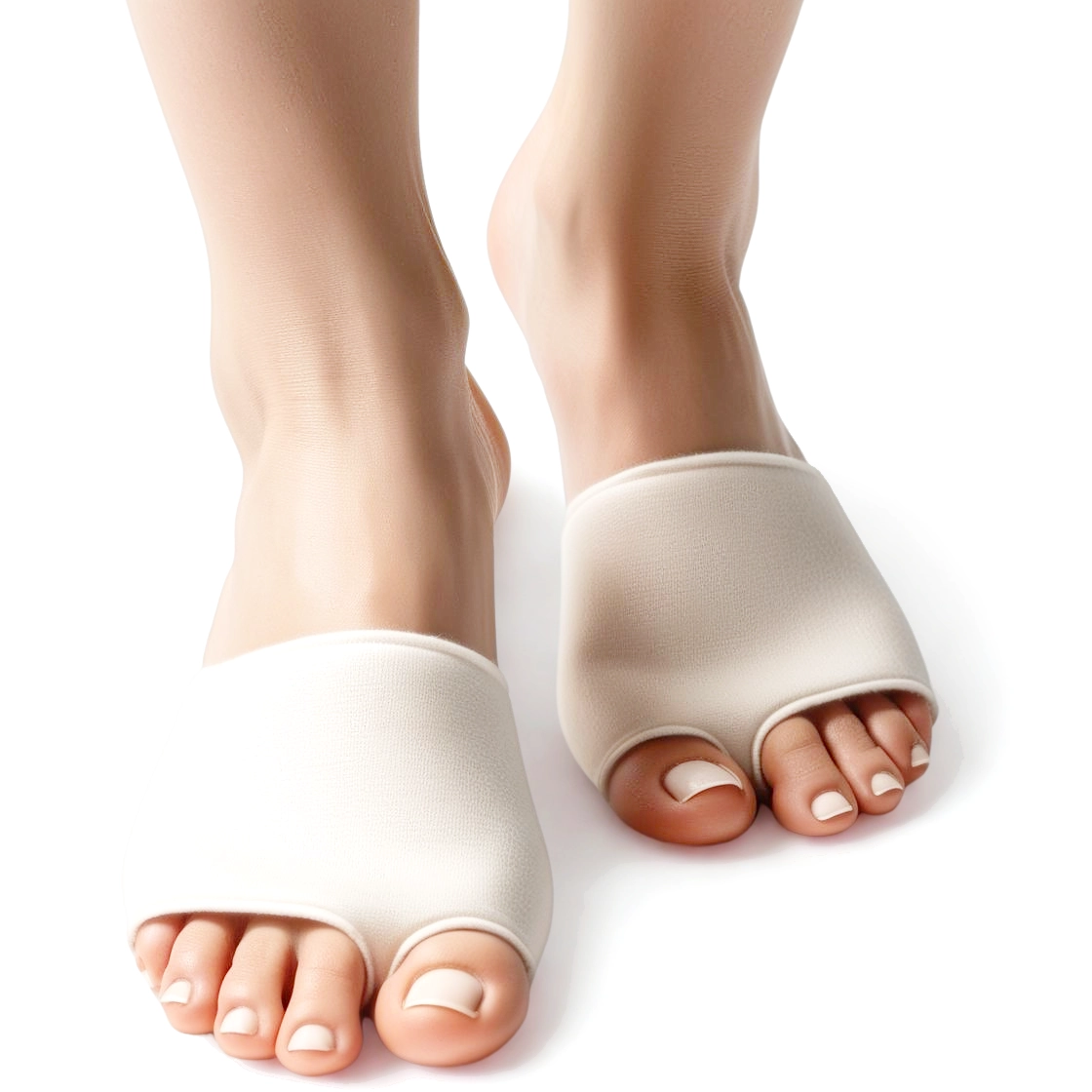
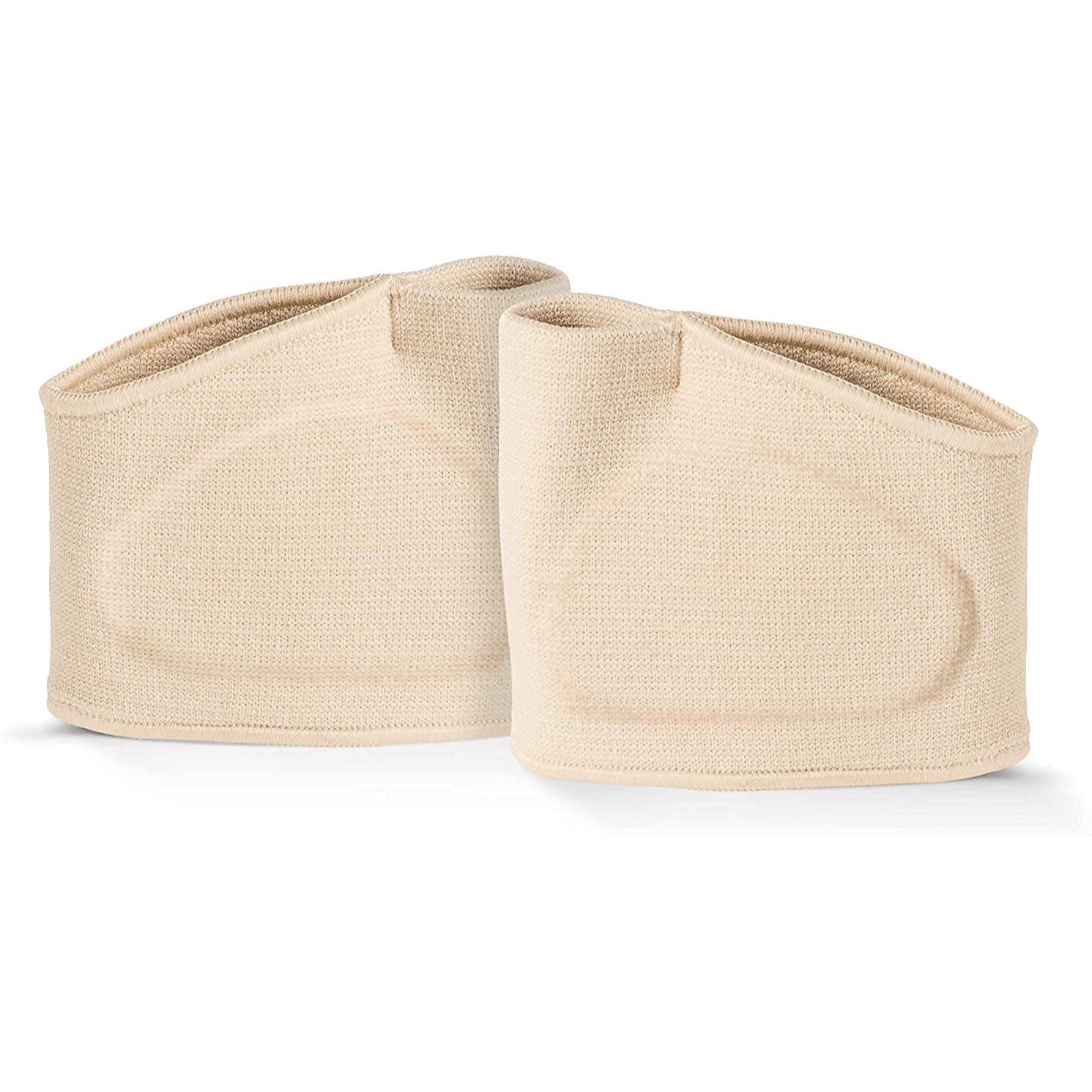
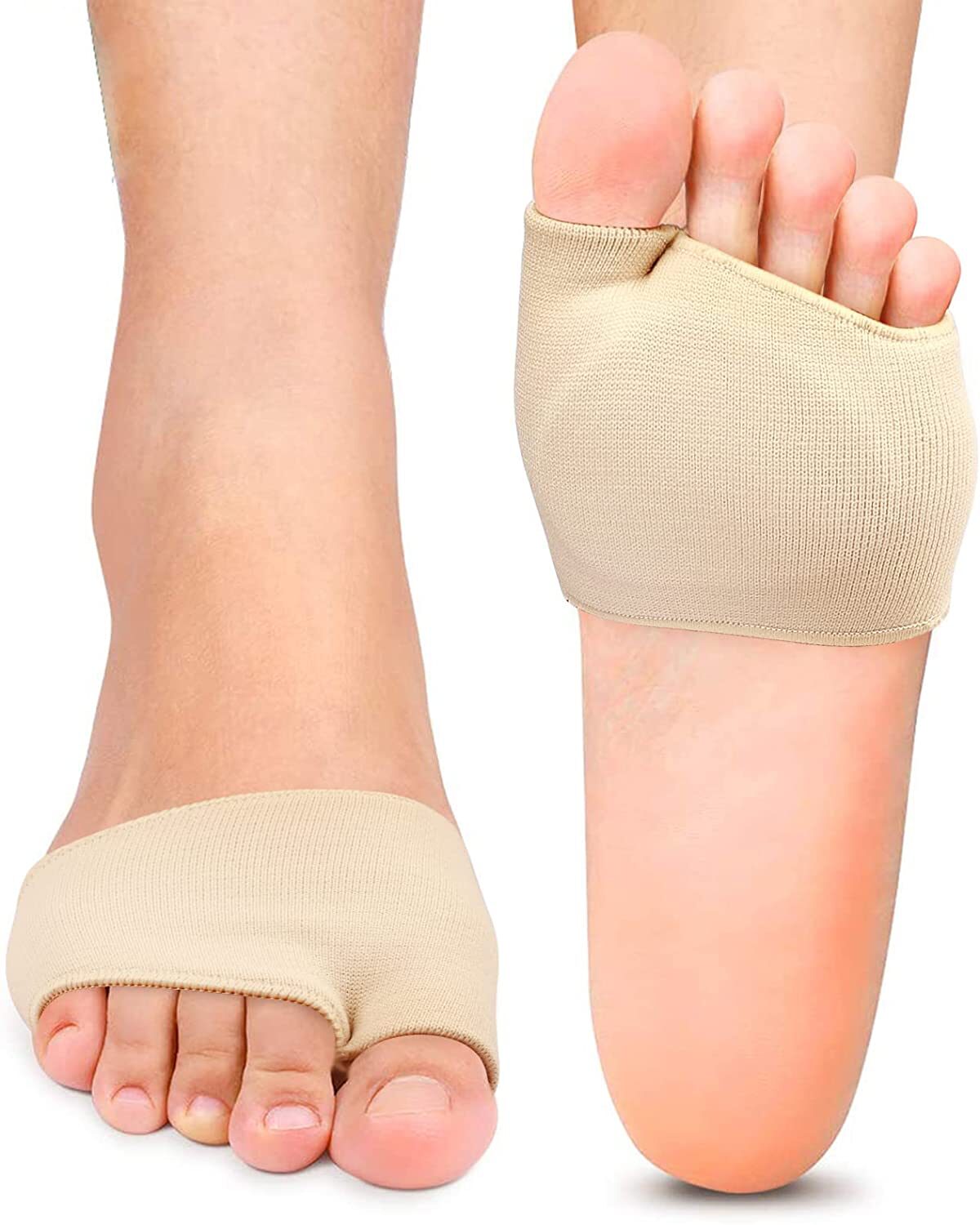
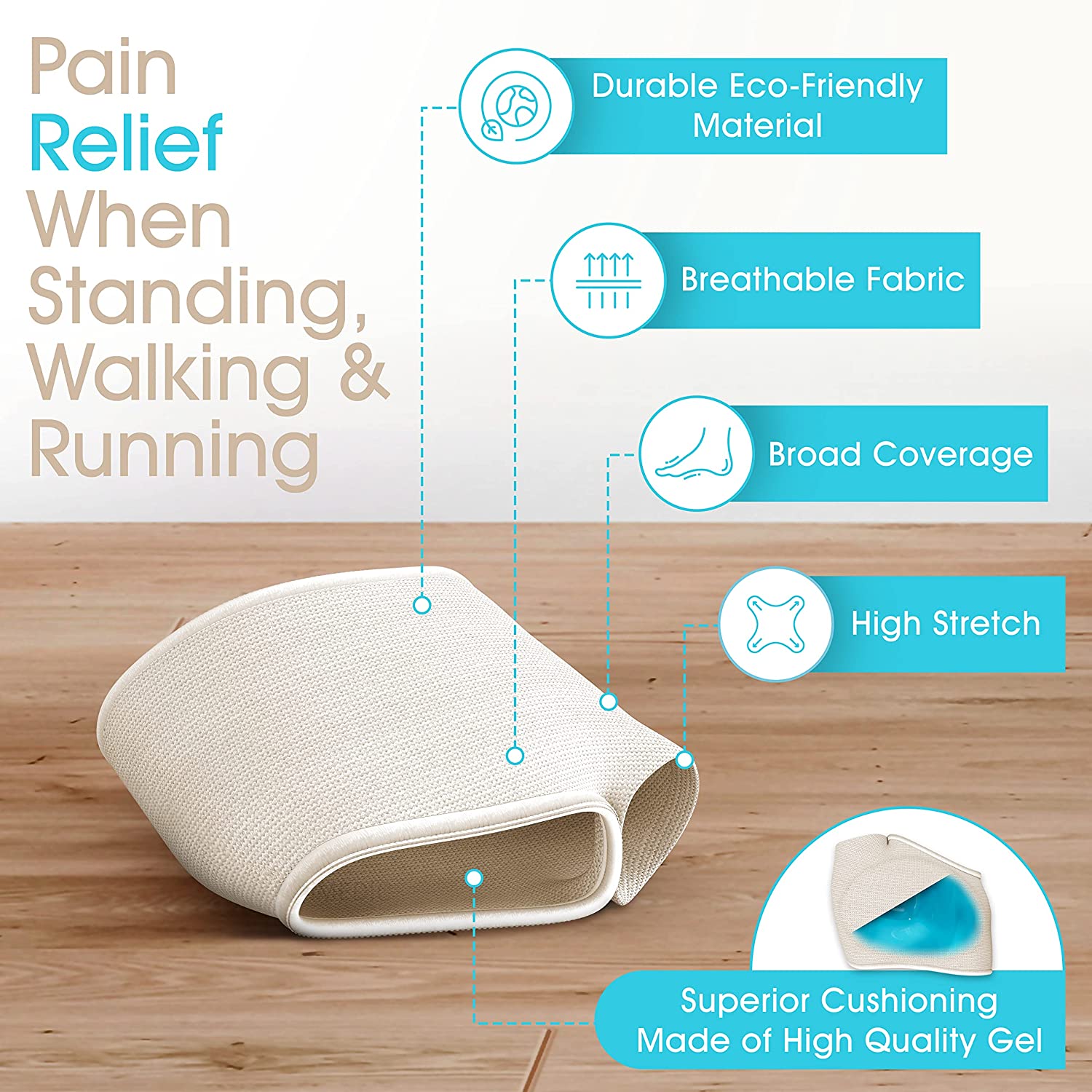
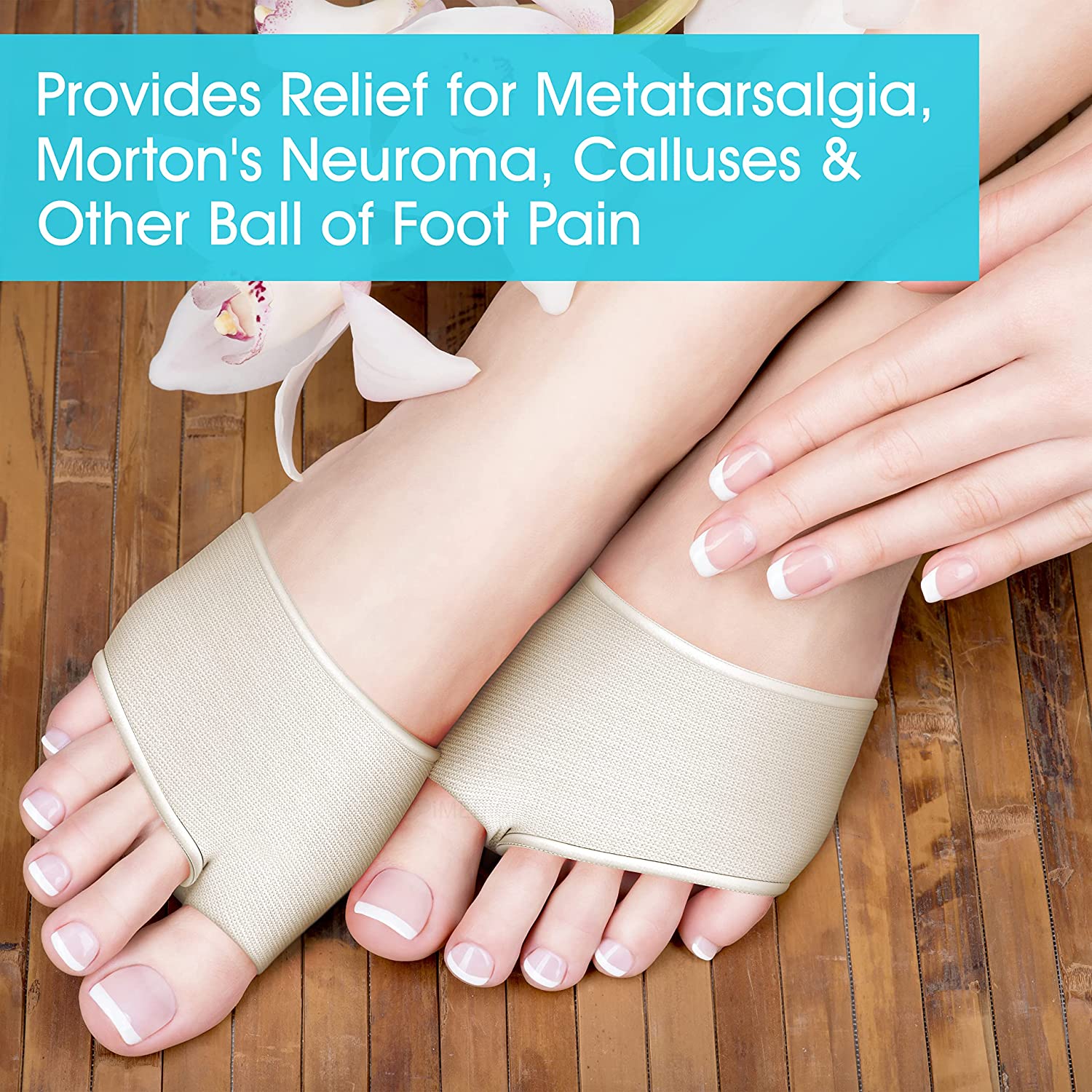
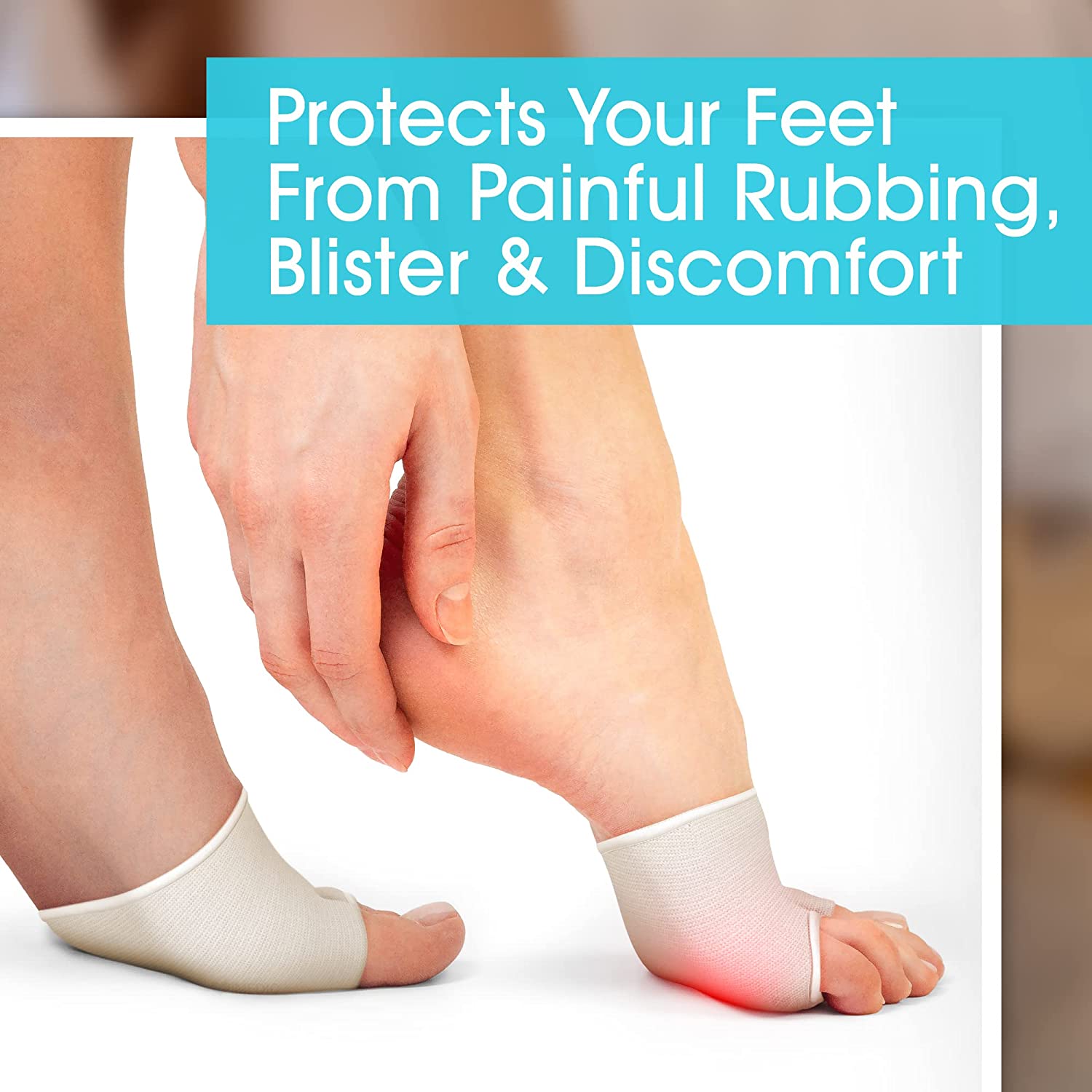

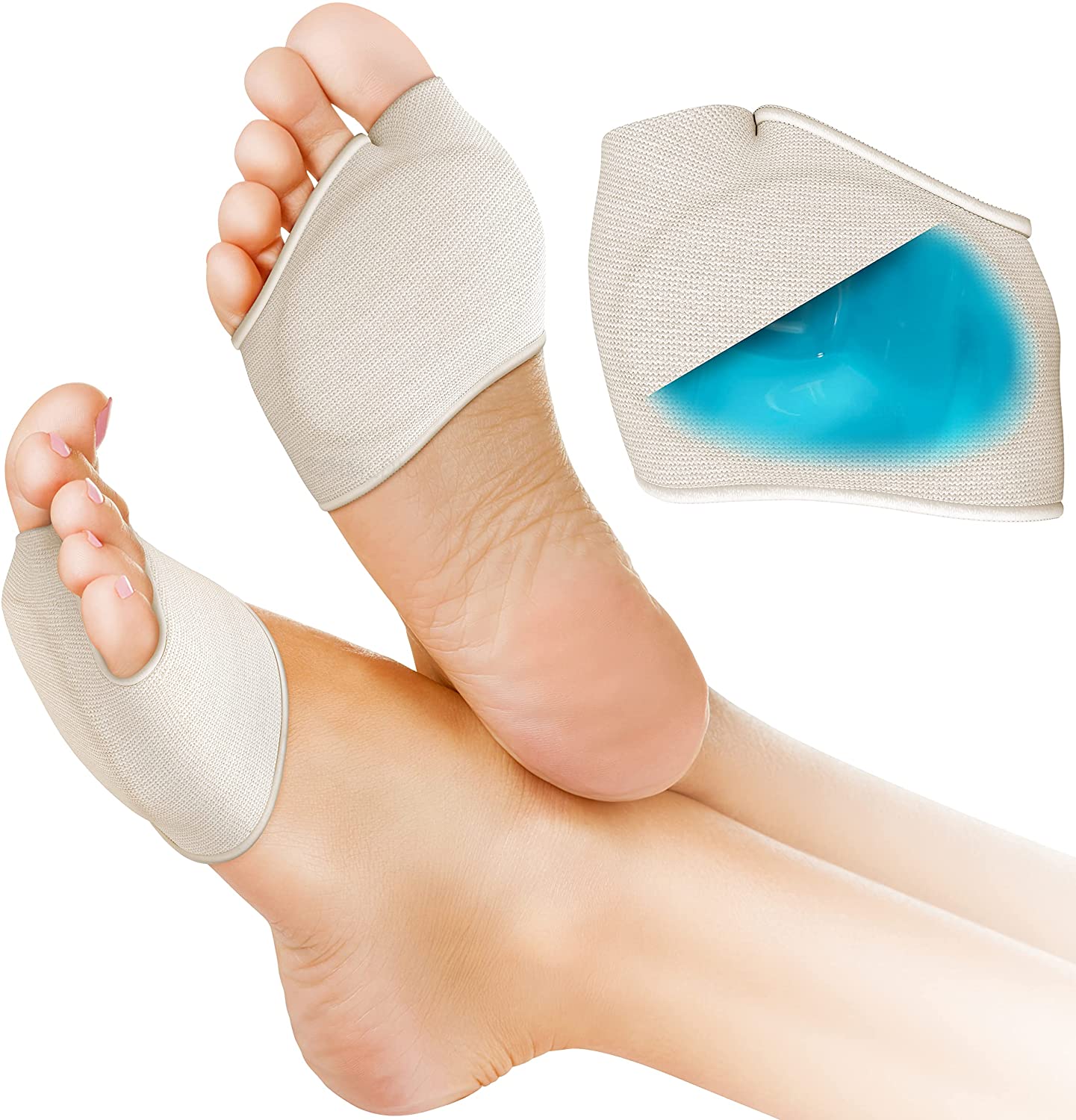
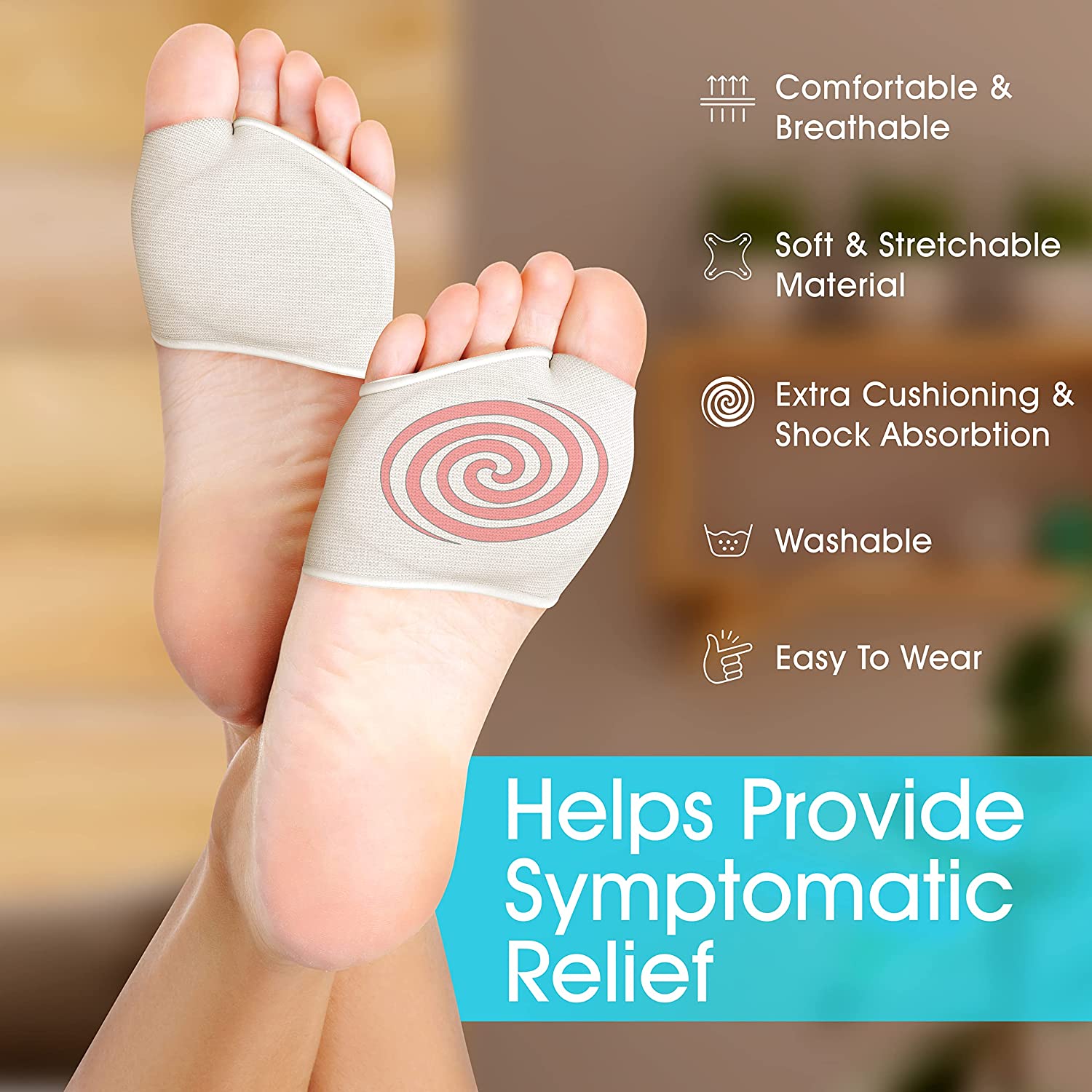
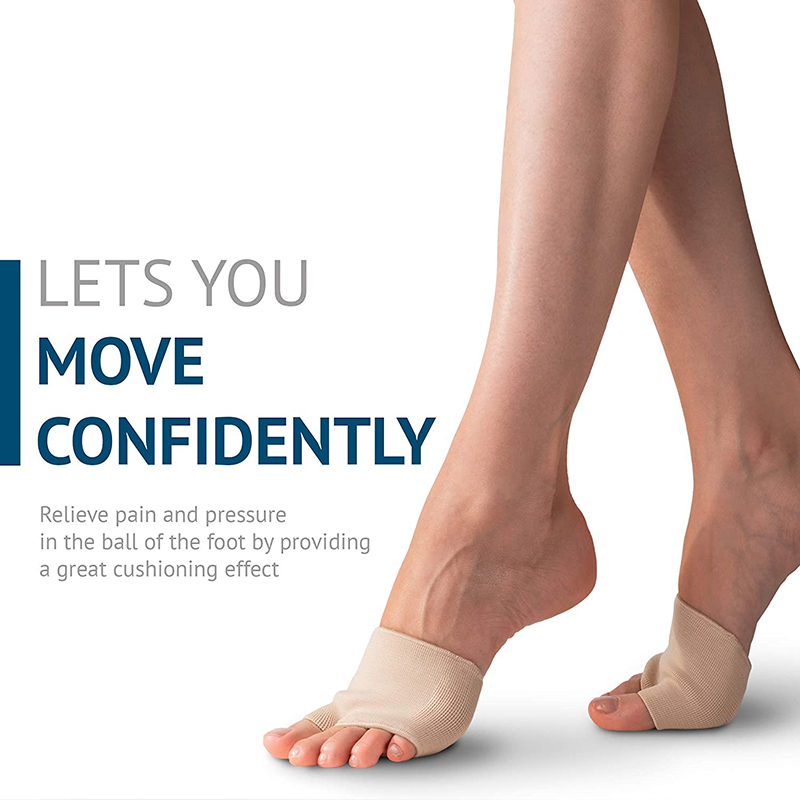
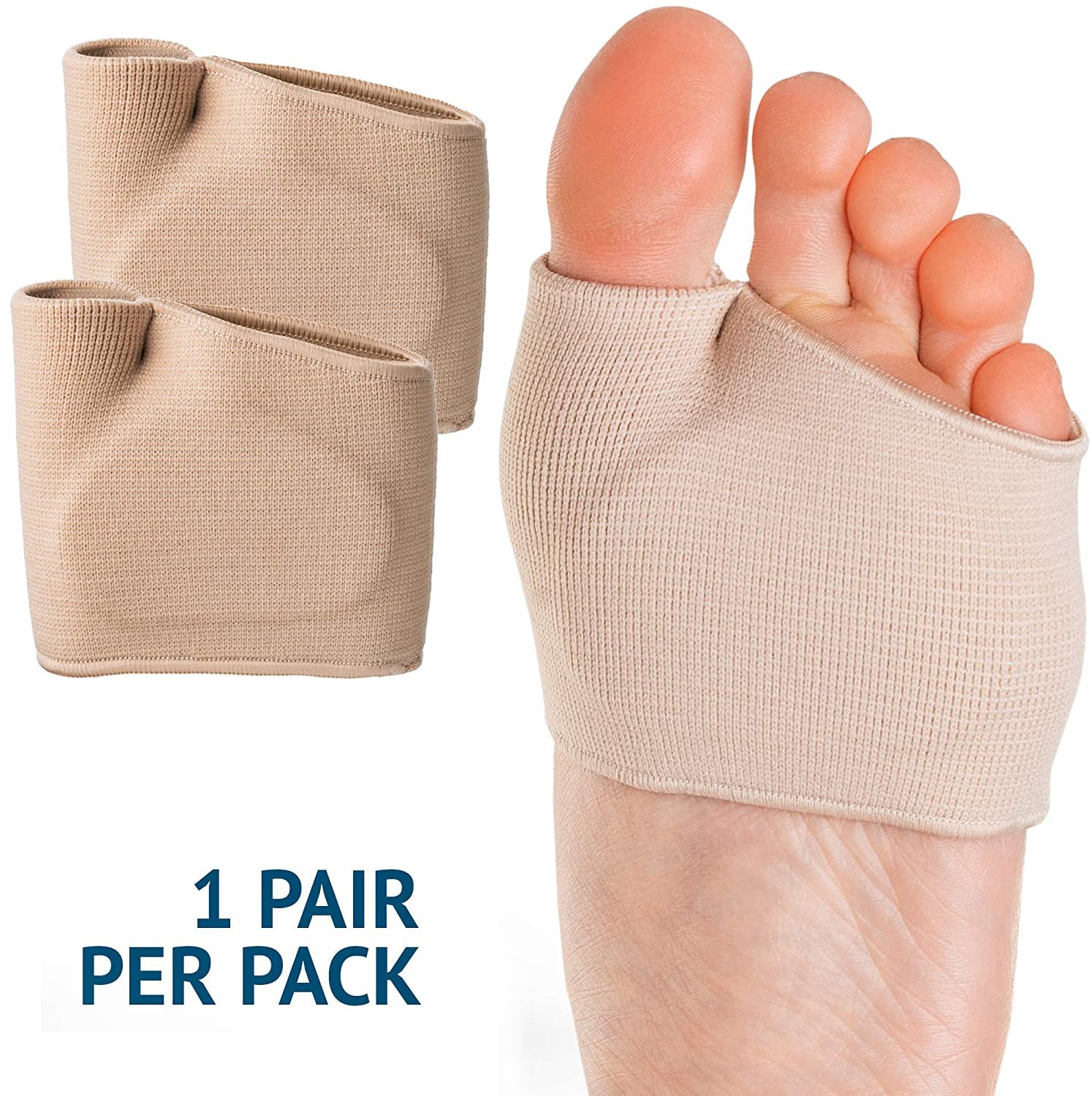
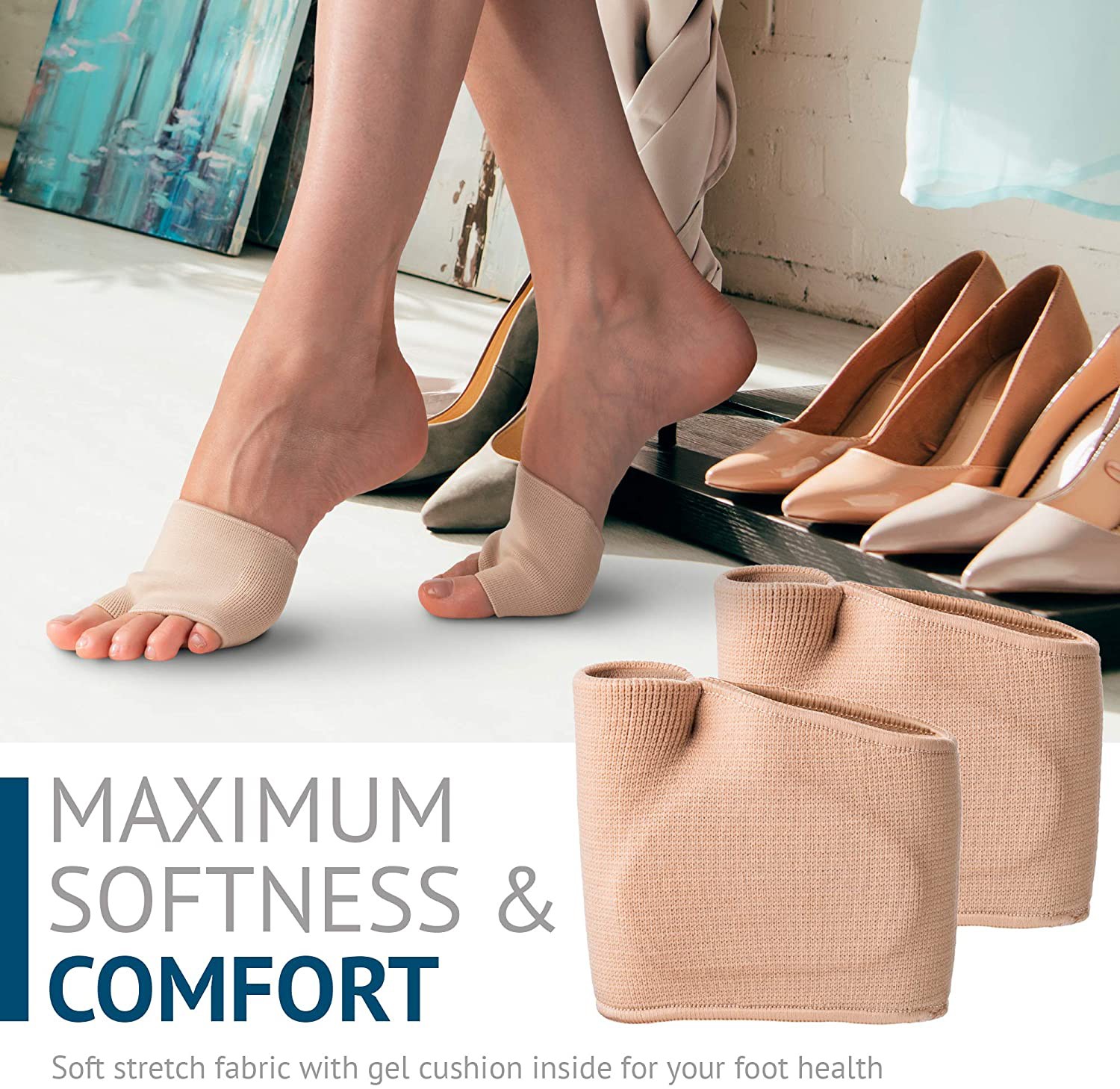
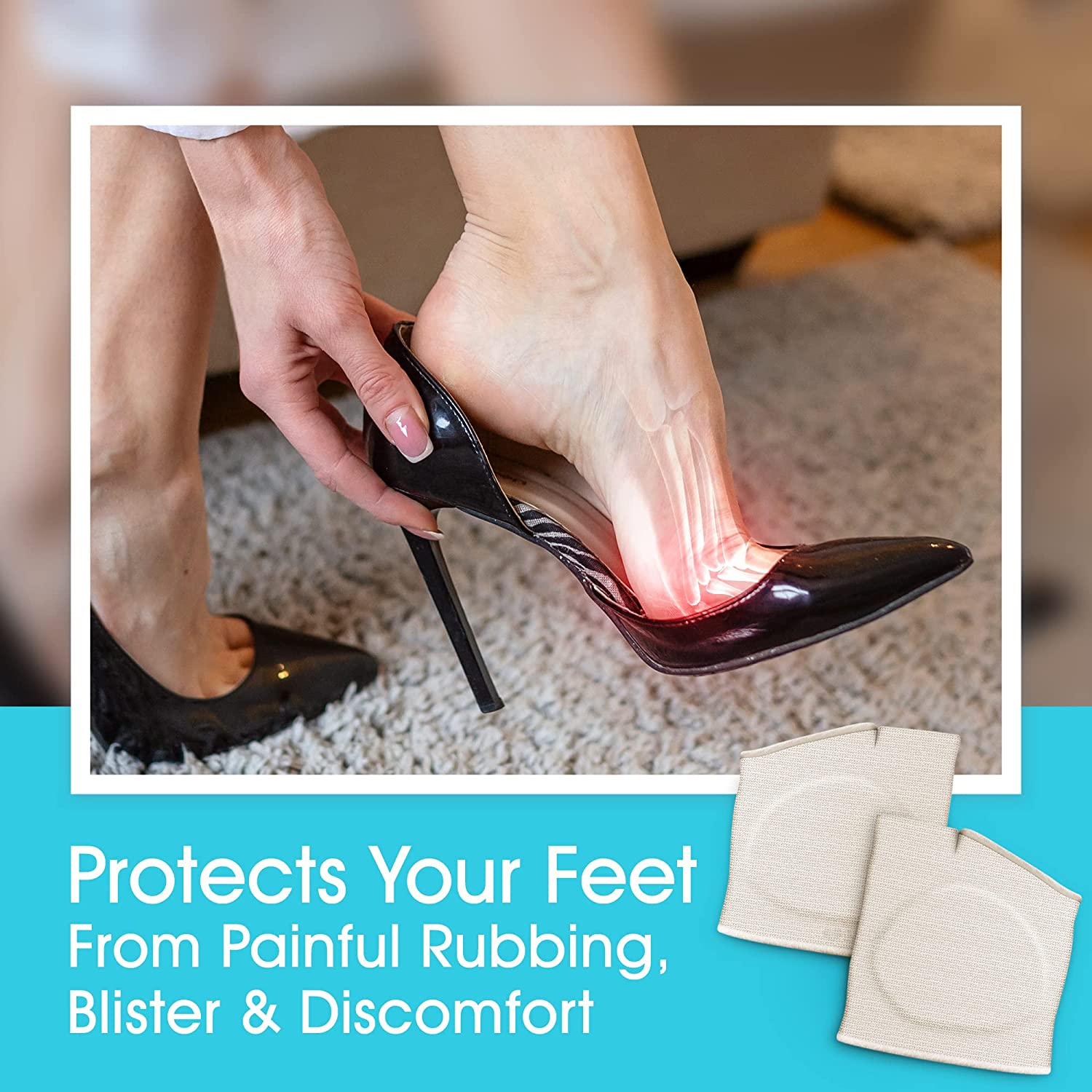
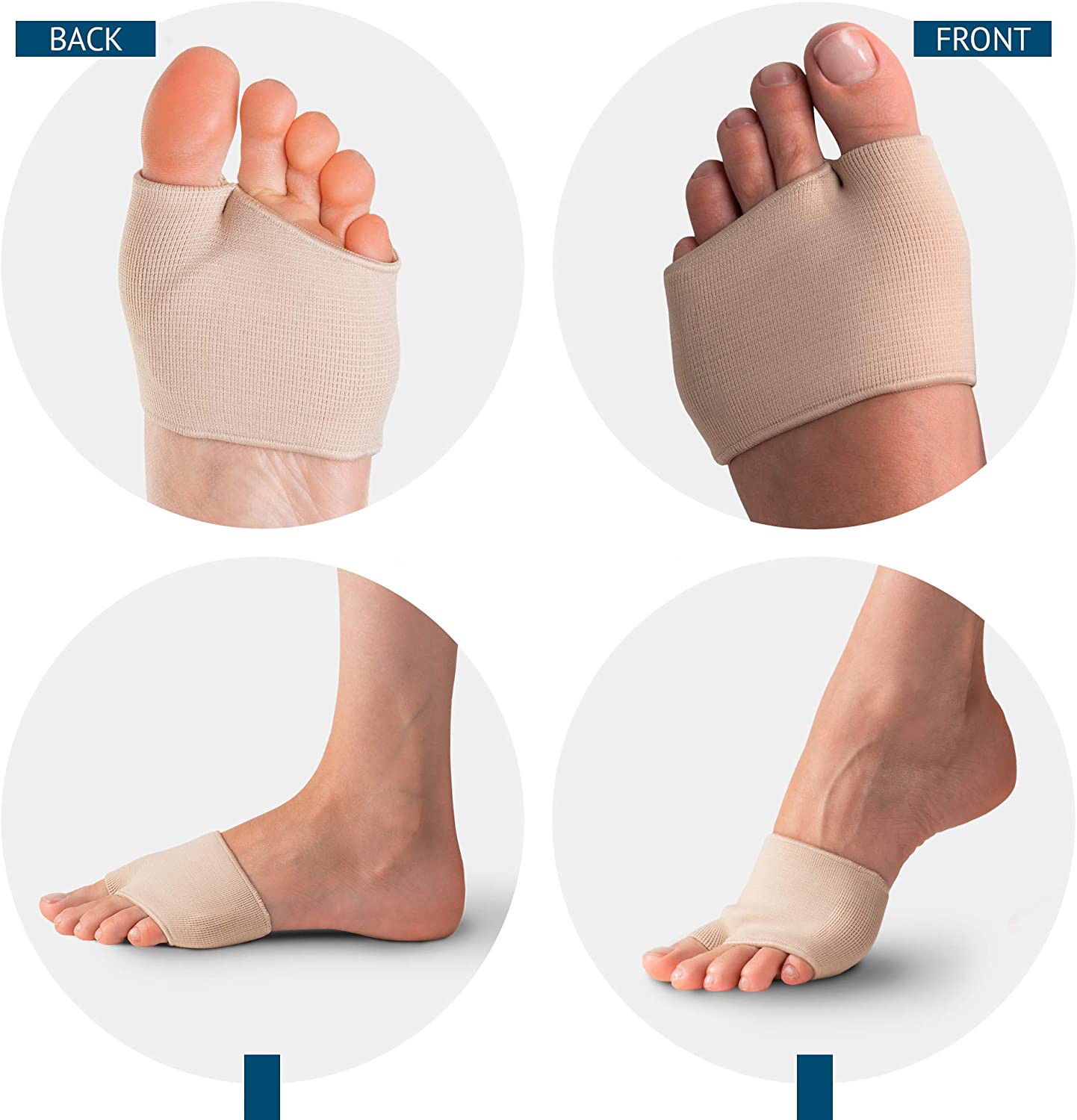
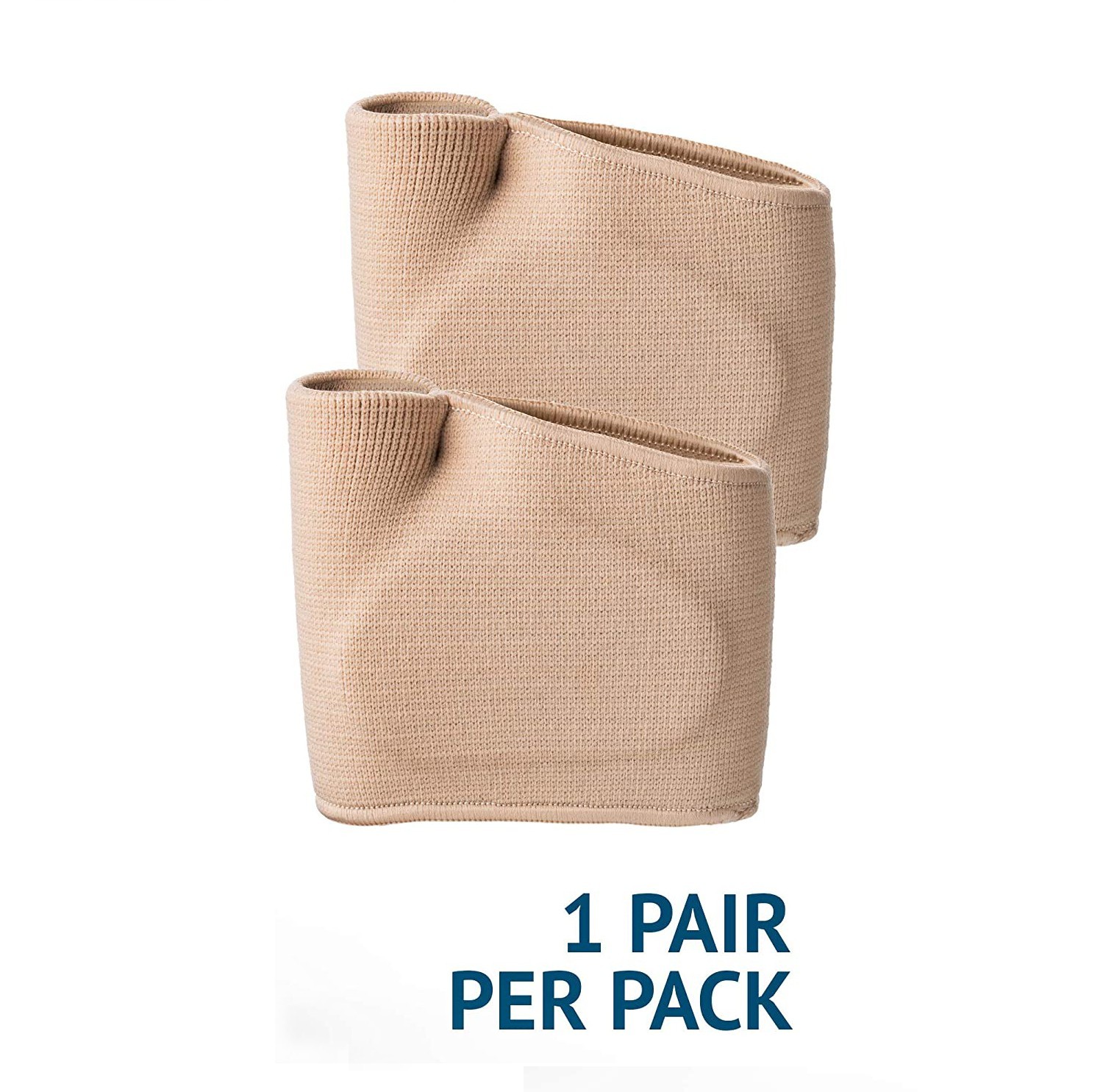
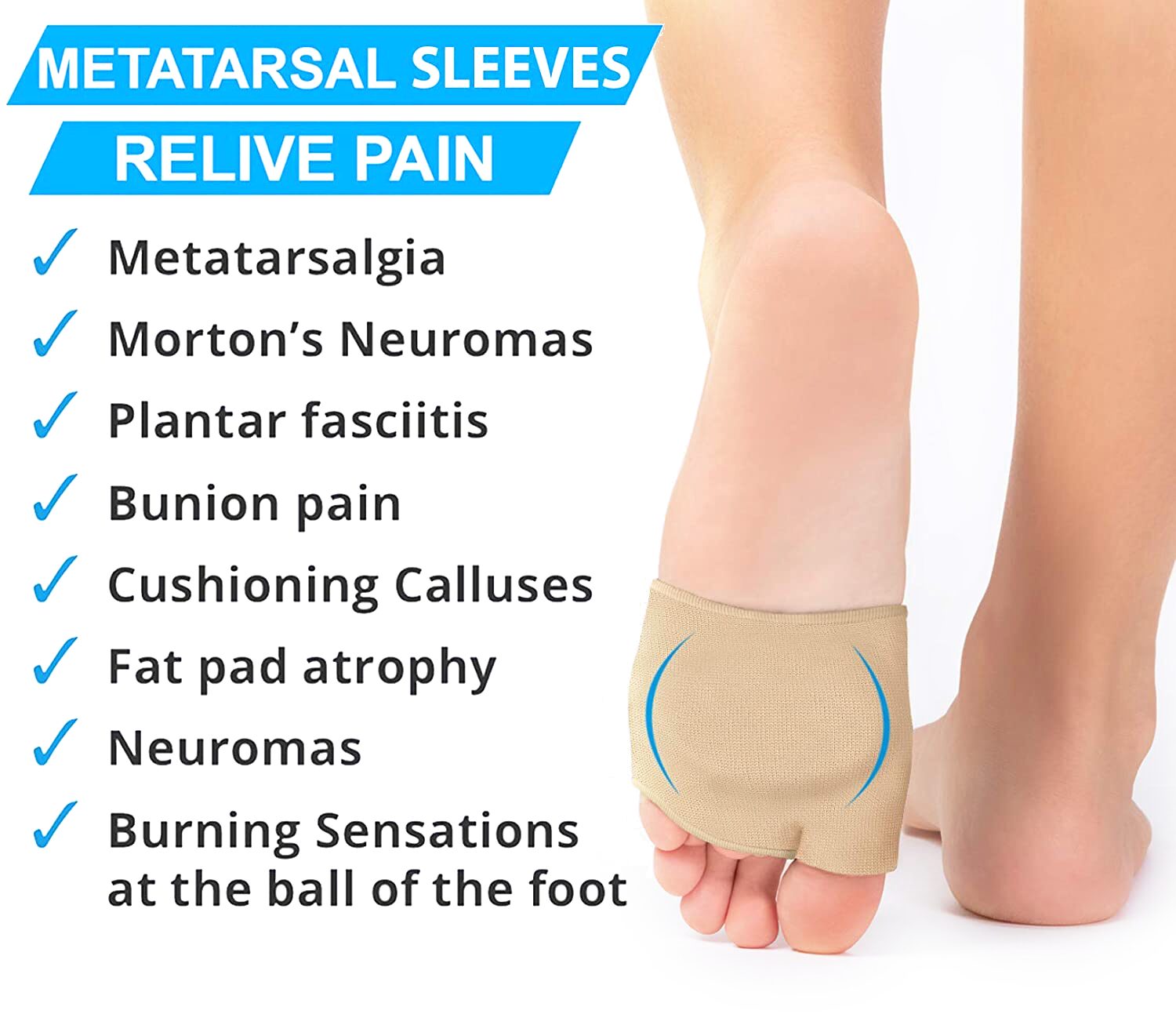
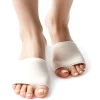
by Emma
I’ve been using them for a few weeks now, and I’ve noticed less pain. It’s like my feet are finally getting the care they need. If you’ve got Morton’s neuroma and you’re still on the fence, don’t hesitate, these pads are a worthy investment!
by Susan Young
Good pads work well.
by Amy
I’ve been dealing with Morton’s neuroma for a while, and boy, it’s been a struggle. The pain was like stepping on pebbles with each step. Now, I’m a waitress, standing all day and it was pretty much a nightmare. Then I got the Morton’s neuroma pads. They’ve been pretty amazing. Good comfort, nice fit in my everyday shoes, and they cushion my foot pretty well. The shock absorption is brilliant. The pain isn’t gone, but it’s manageable now.
by Cat Jones
I’m a nurse, always on my feet, and have battled foot discomfort for as long as I can remember. A colleague suggested these Morton’s neuroma pads. To be honest, I’m blown away with the relief they’ve given me.
They are super easy to use, the packaging was simple and straightforward, plus they fit nicely in my shoes. I love that they not just soothe pain, but they are designed to prevent my Morton’s neuroma from getting worse. I’ve noticed the difference, my feet are no longer throbbing by the end of my shift. I can’t recommend these enough! Personally, I feel like they’ve improved my work life because I’m no longer always stressing about my feet hurting.
by Janey
I got these pads for my mom who’s been suffering from the Morton’s neuroma for years. She’s always on the go, and the pain was getting to be too much. Now, she wears these pads under her feet every day, and she says it’s made a world of difference. She no longer feels the sharp, jarring pain with every step. It’s like these pads have given her her freedom back, and for that, we’re both incredibly grateful. Fantastic product, worth every penny!